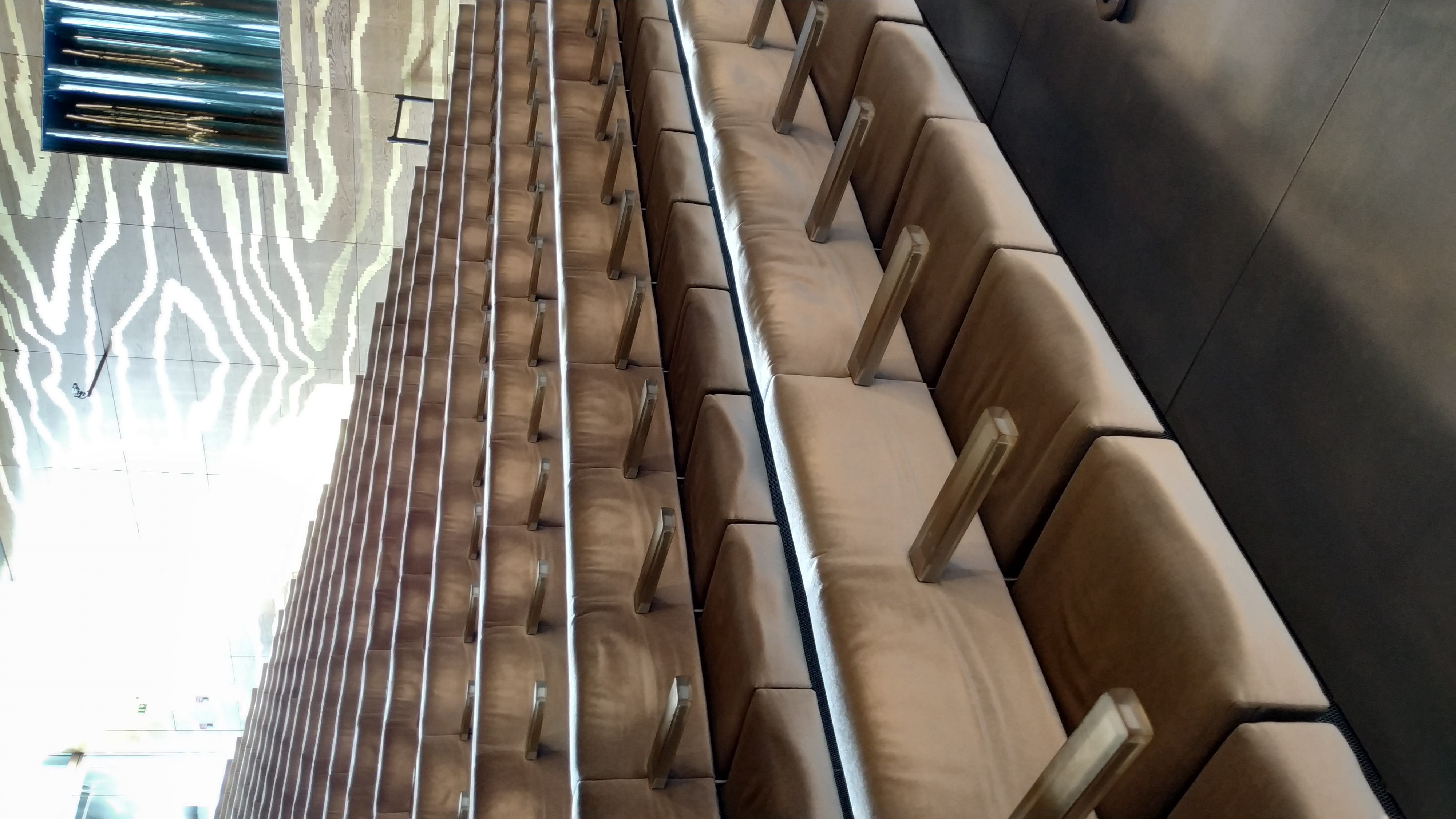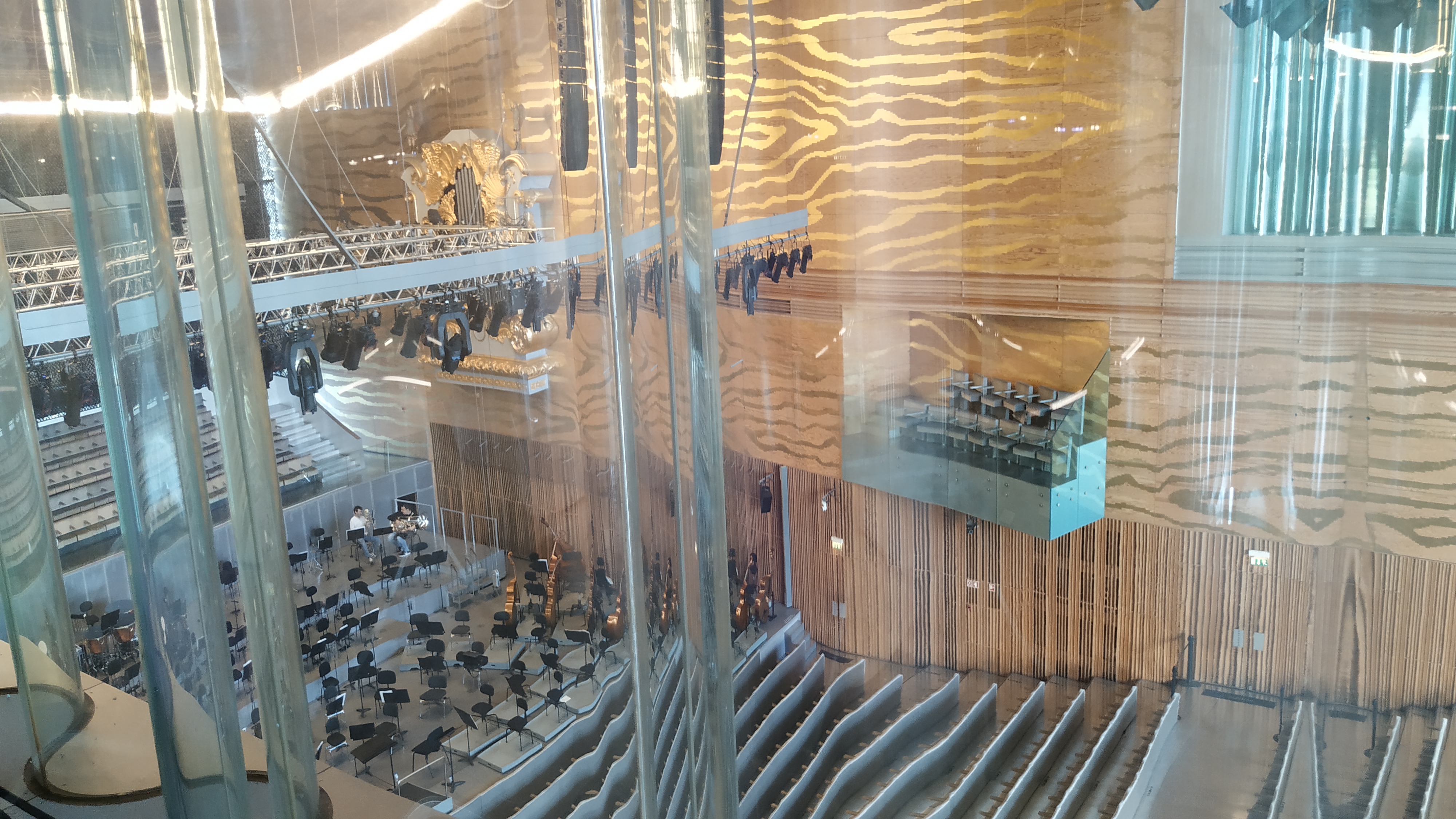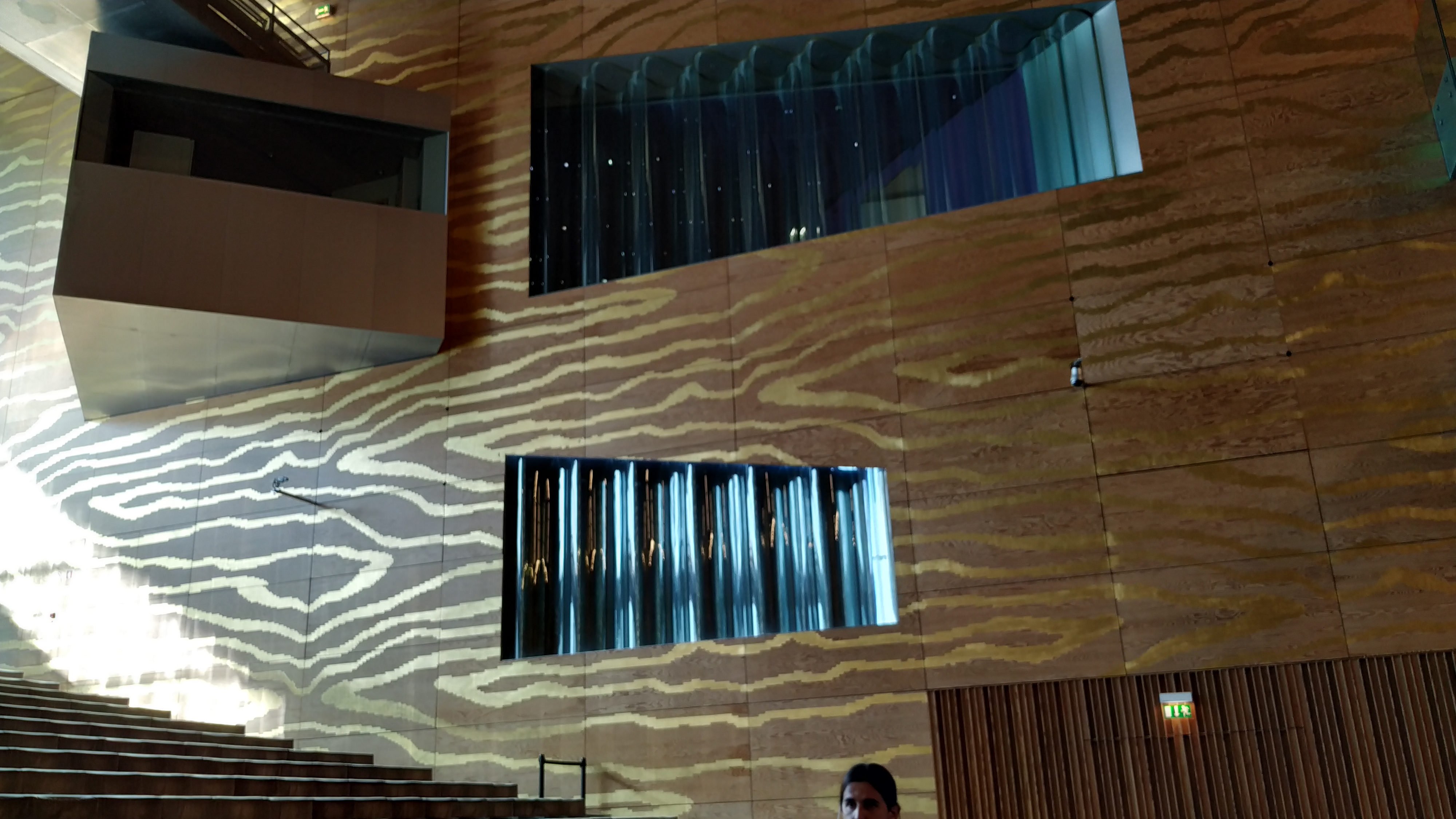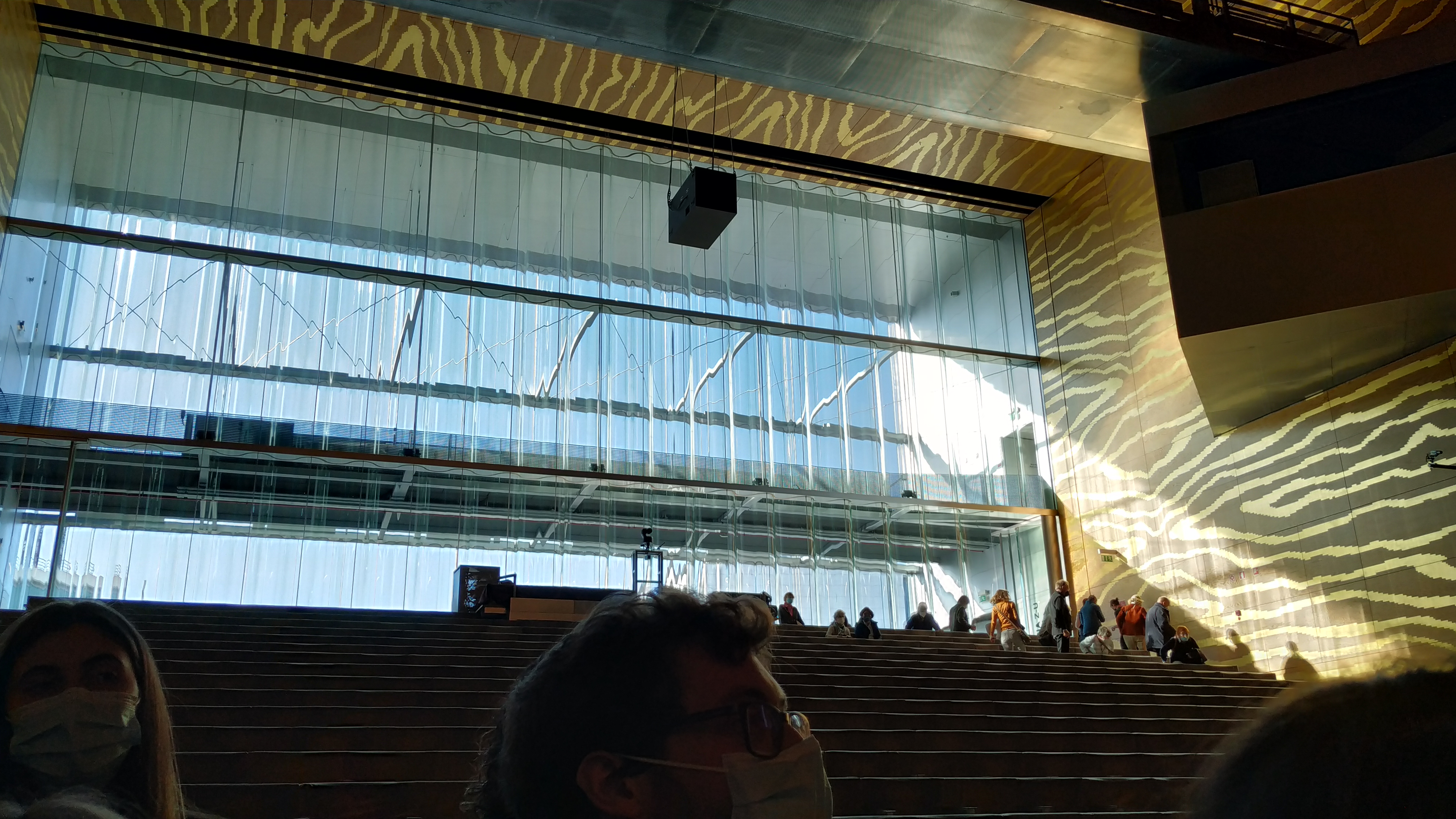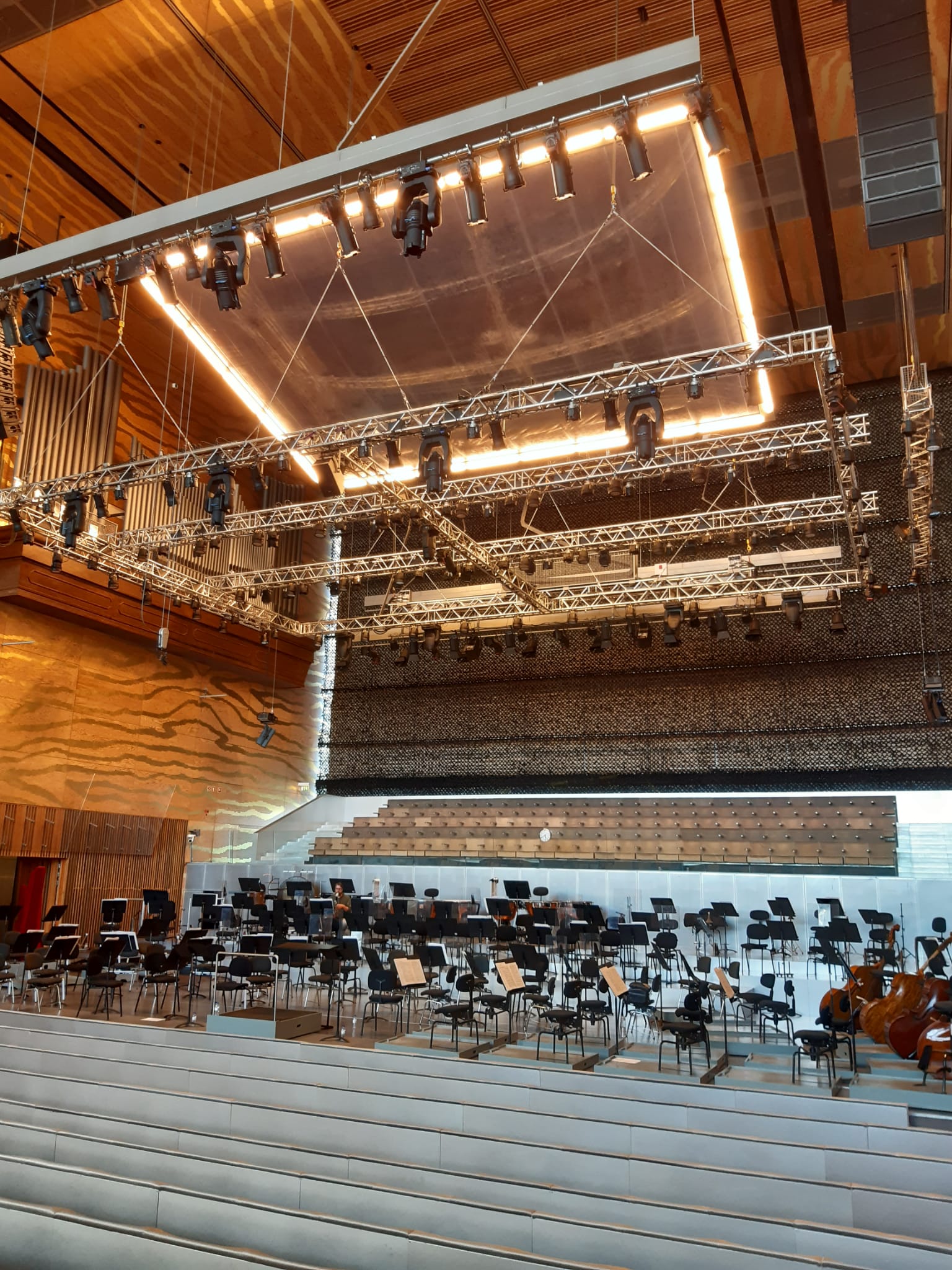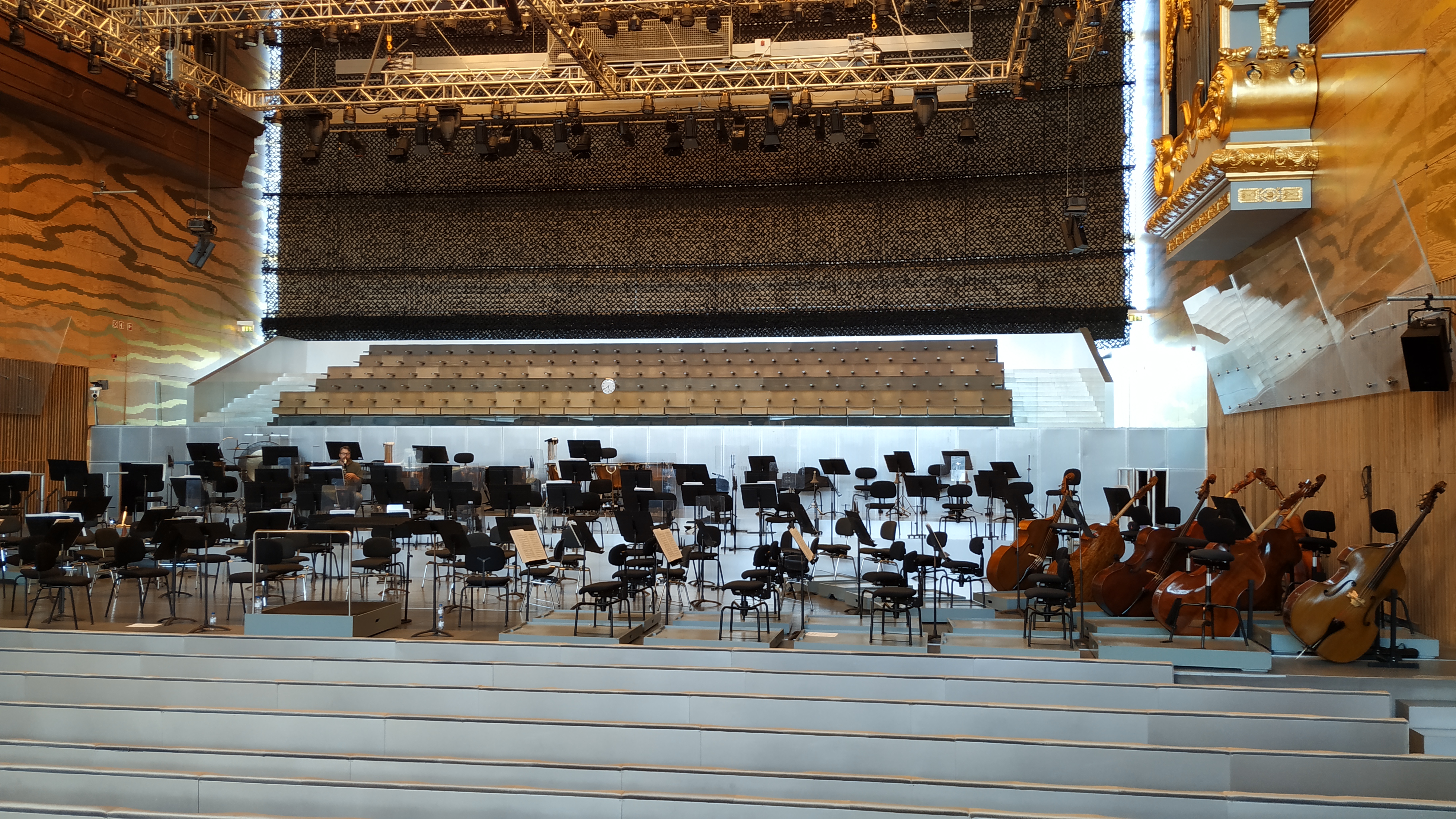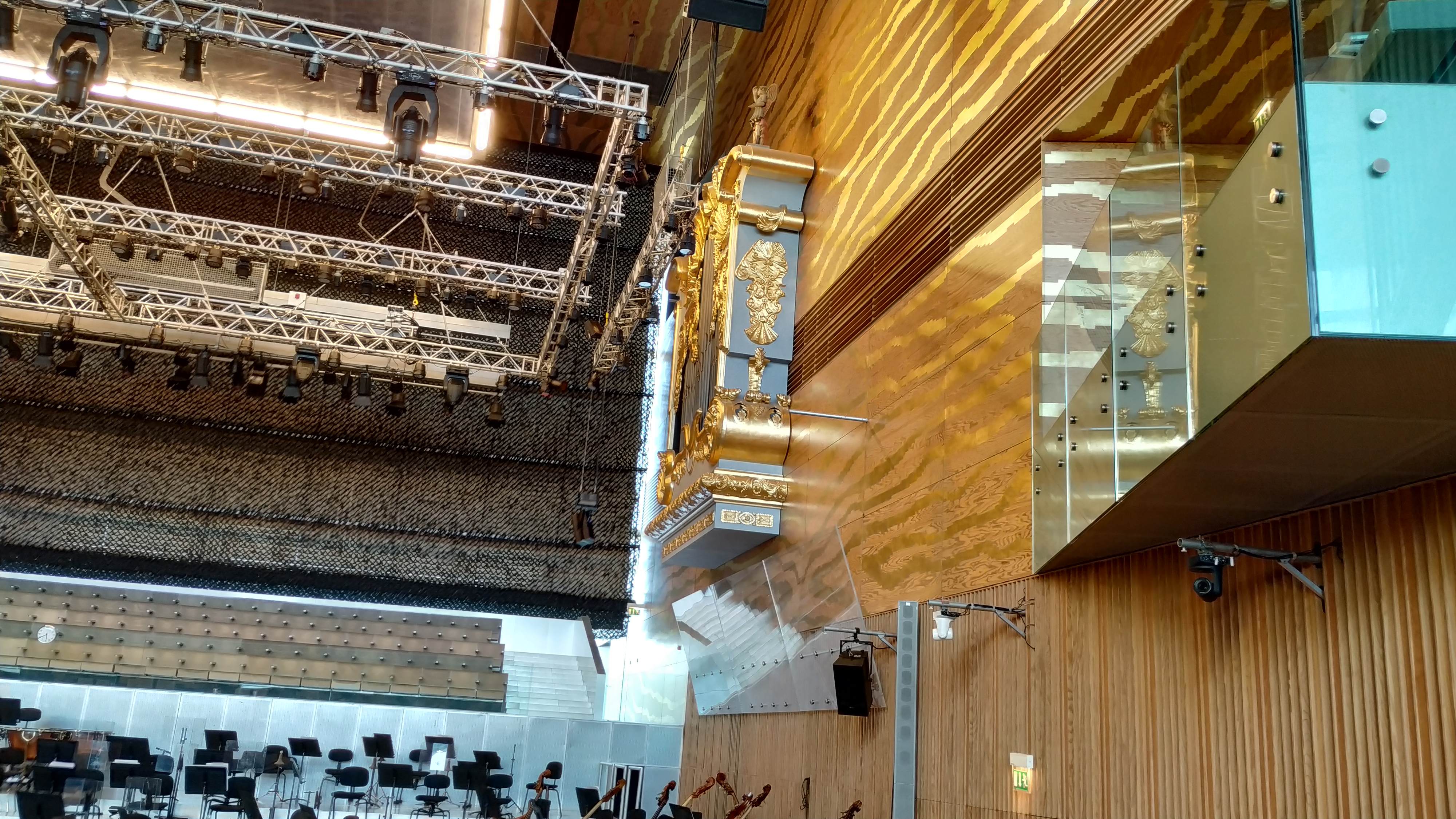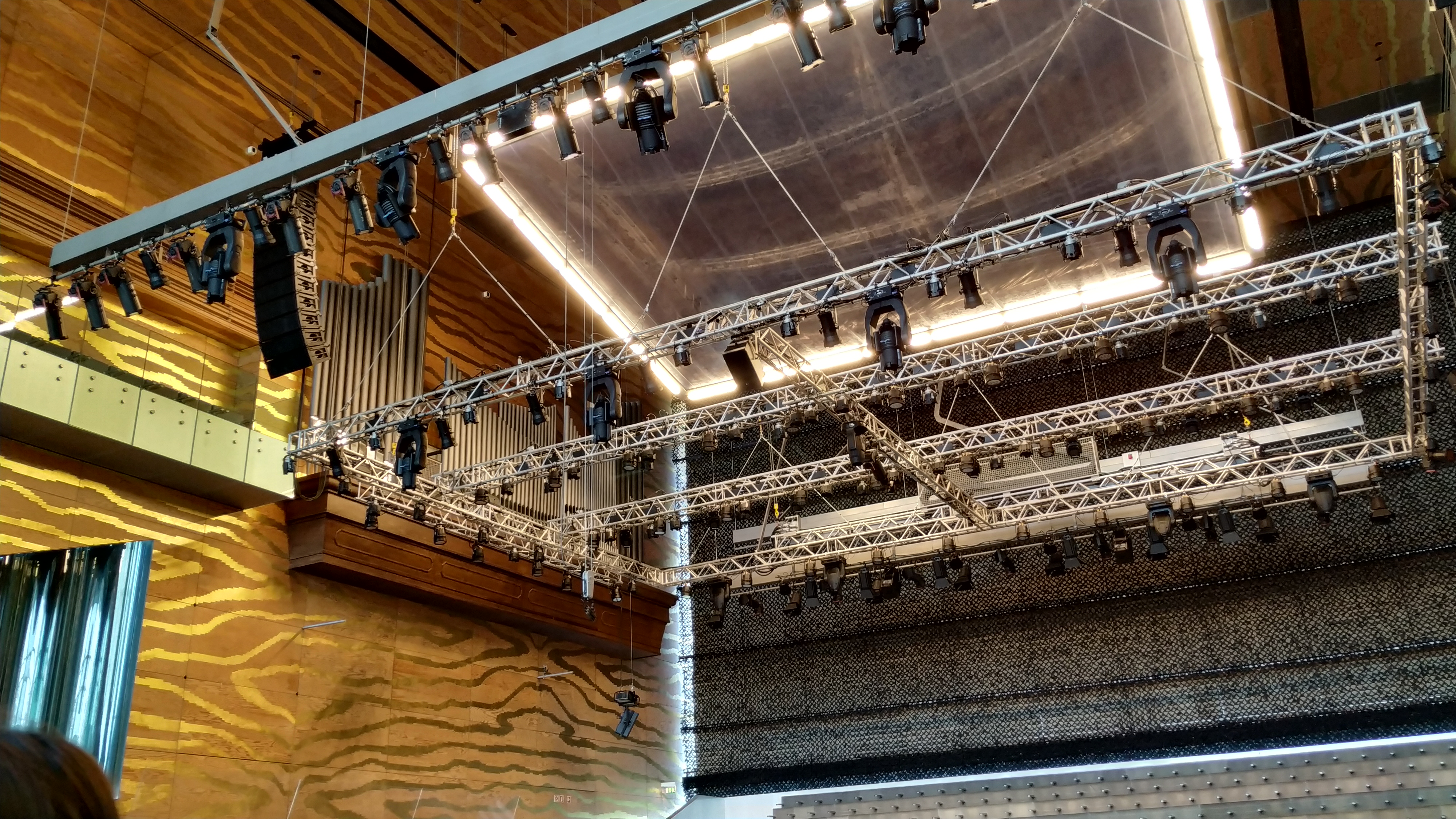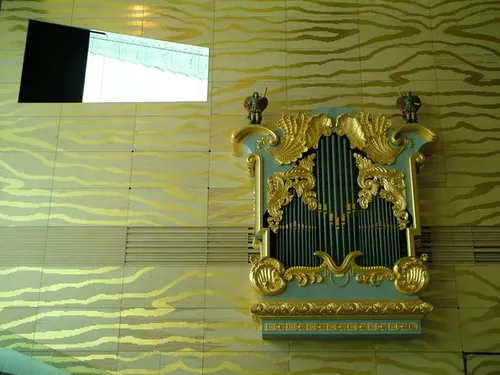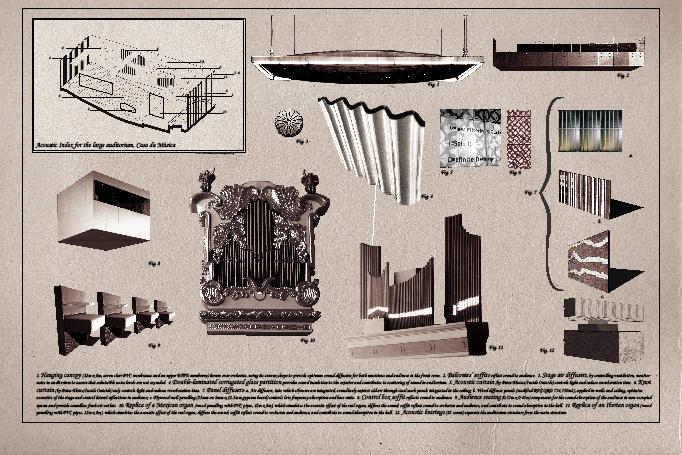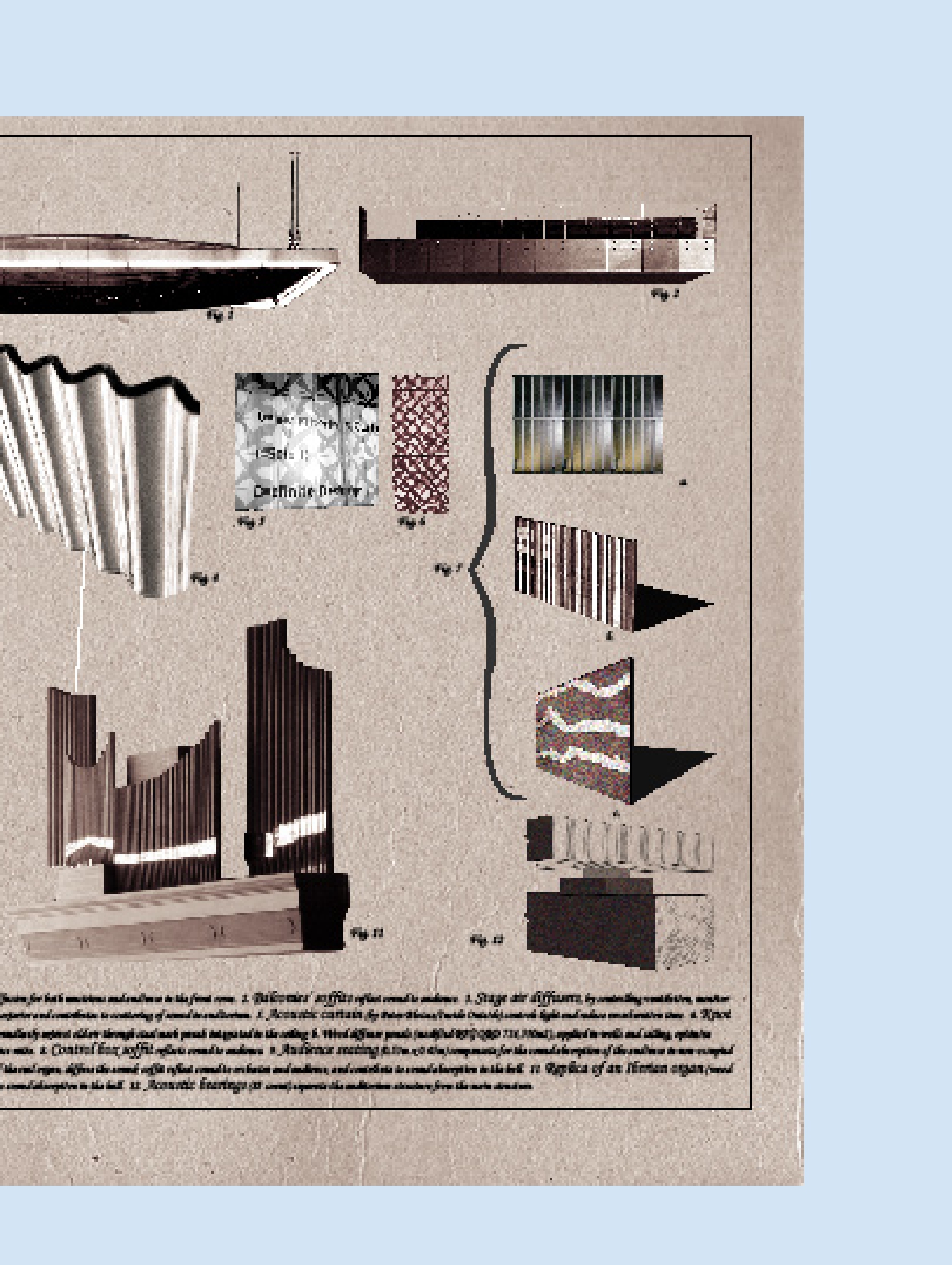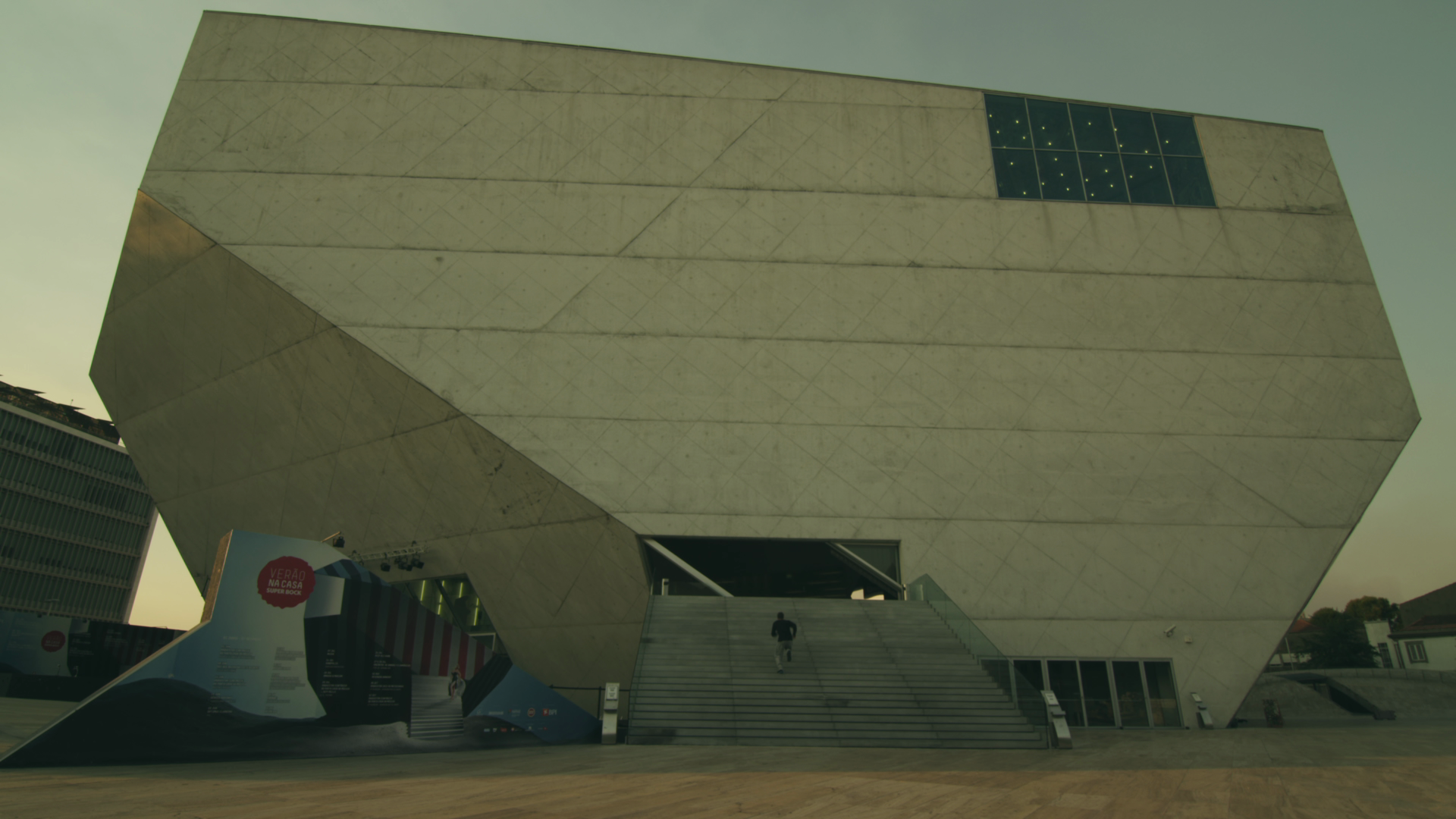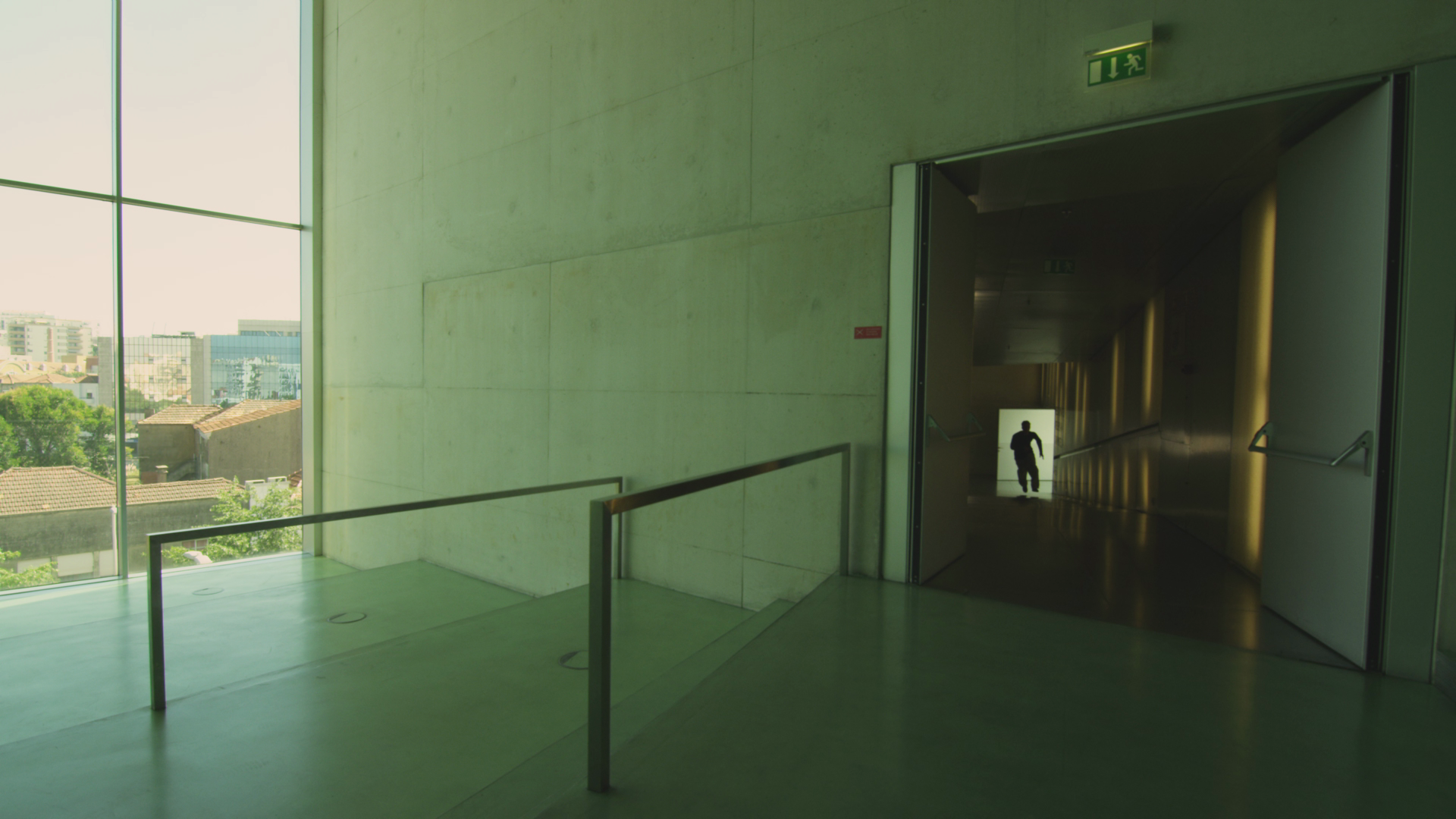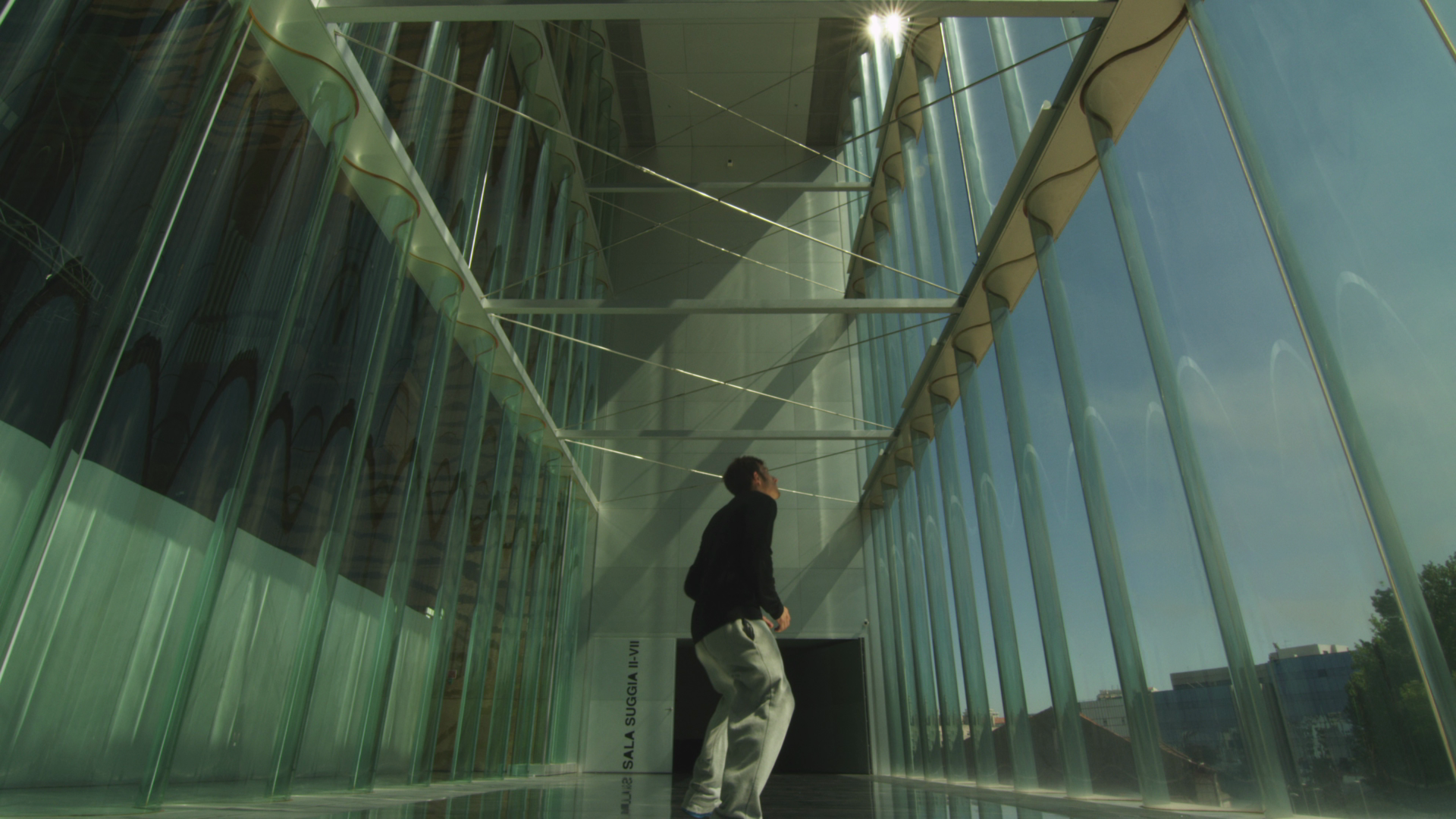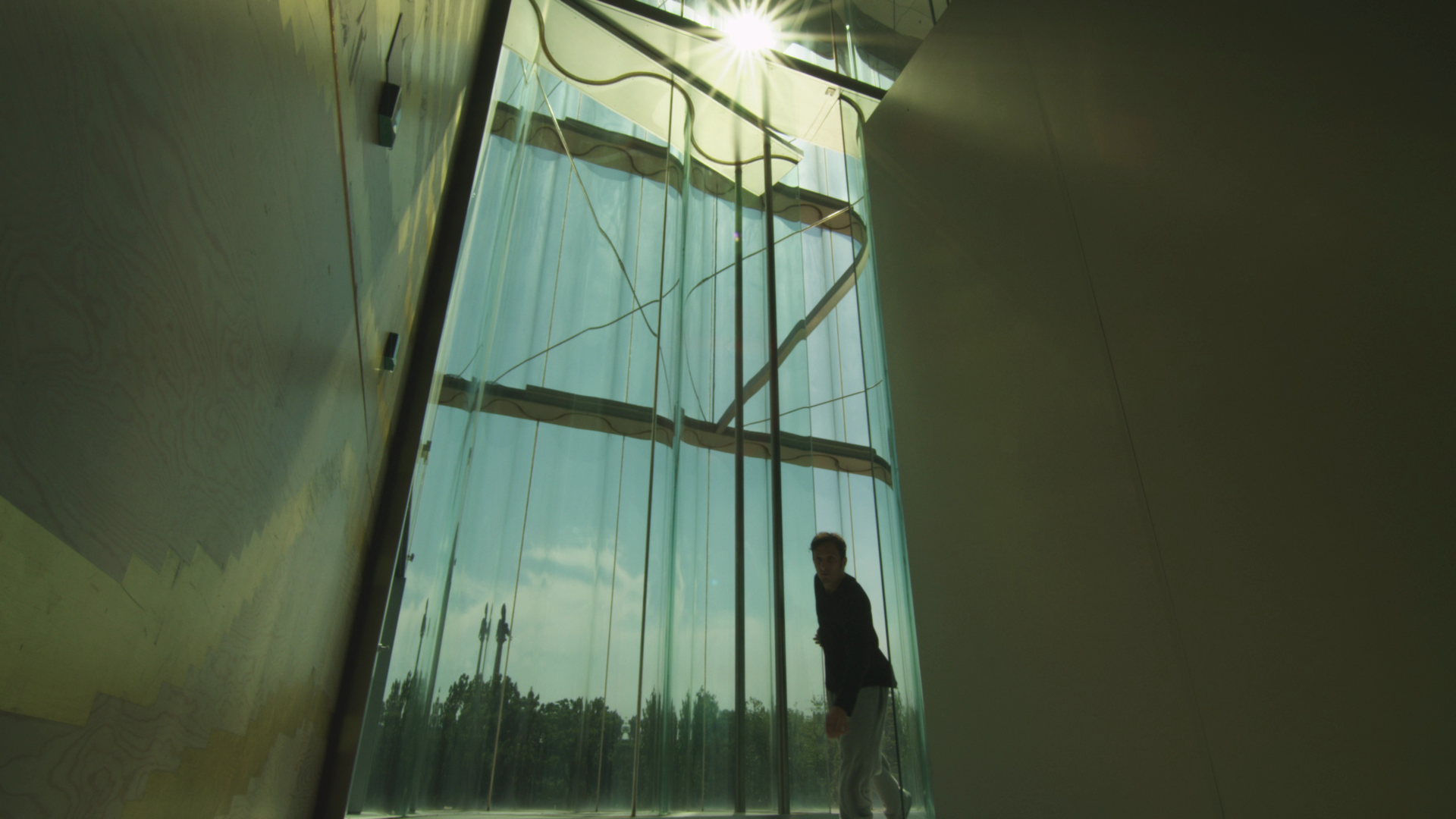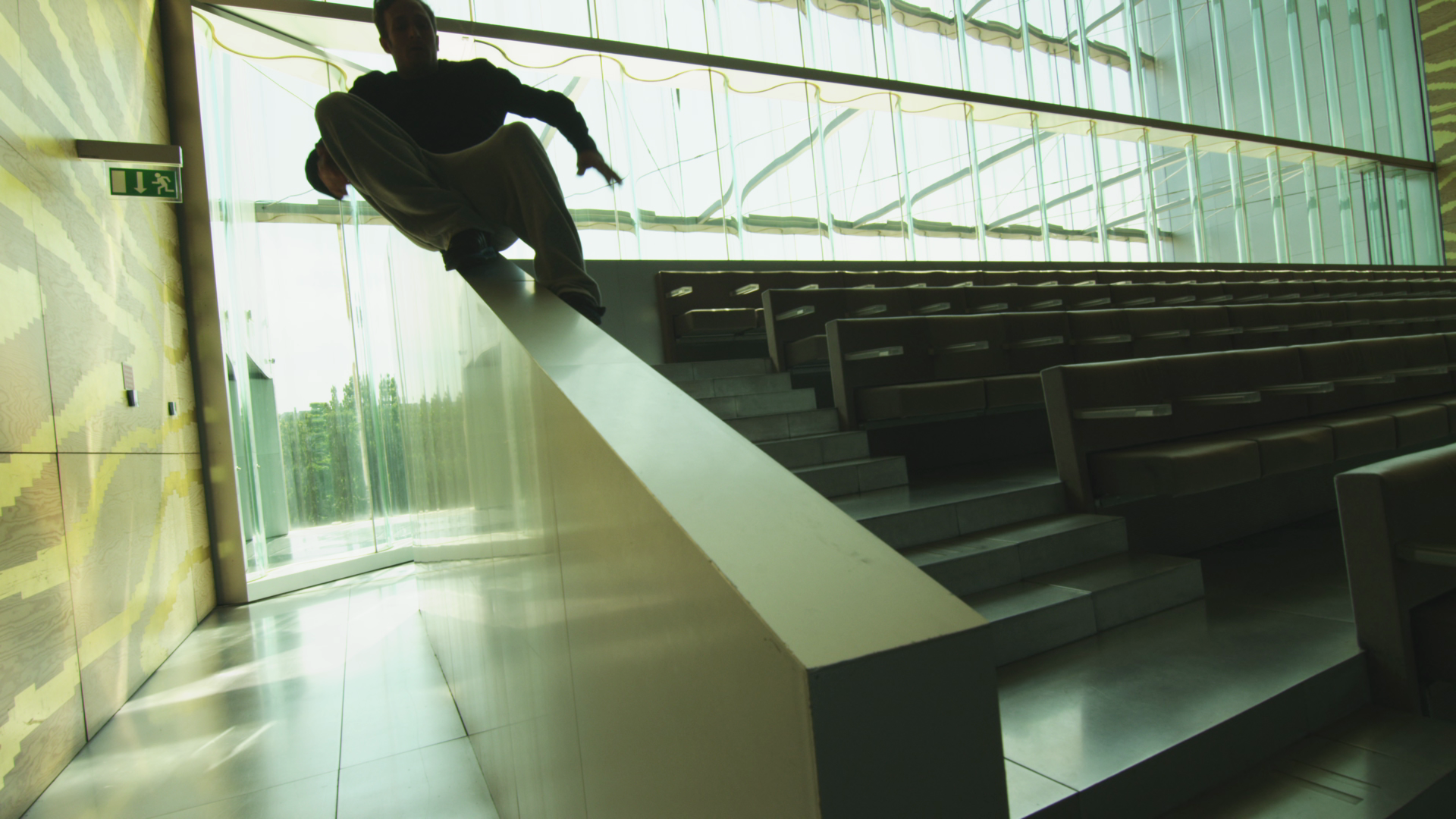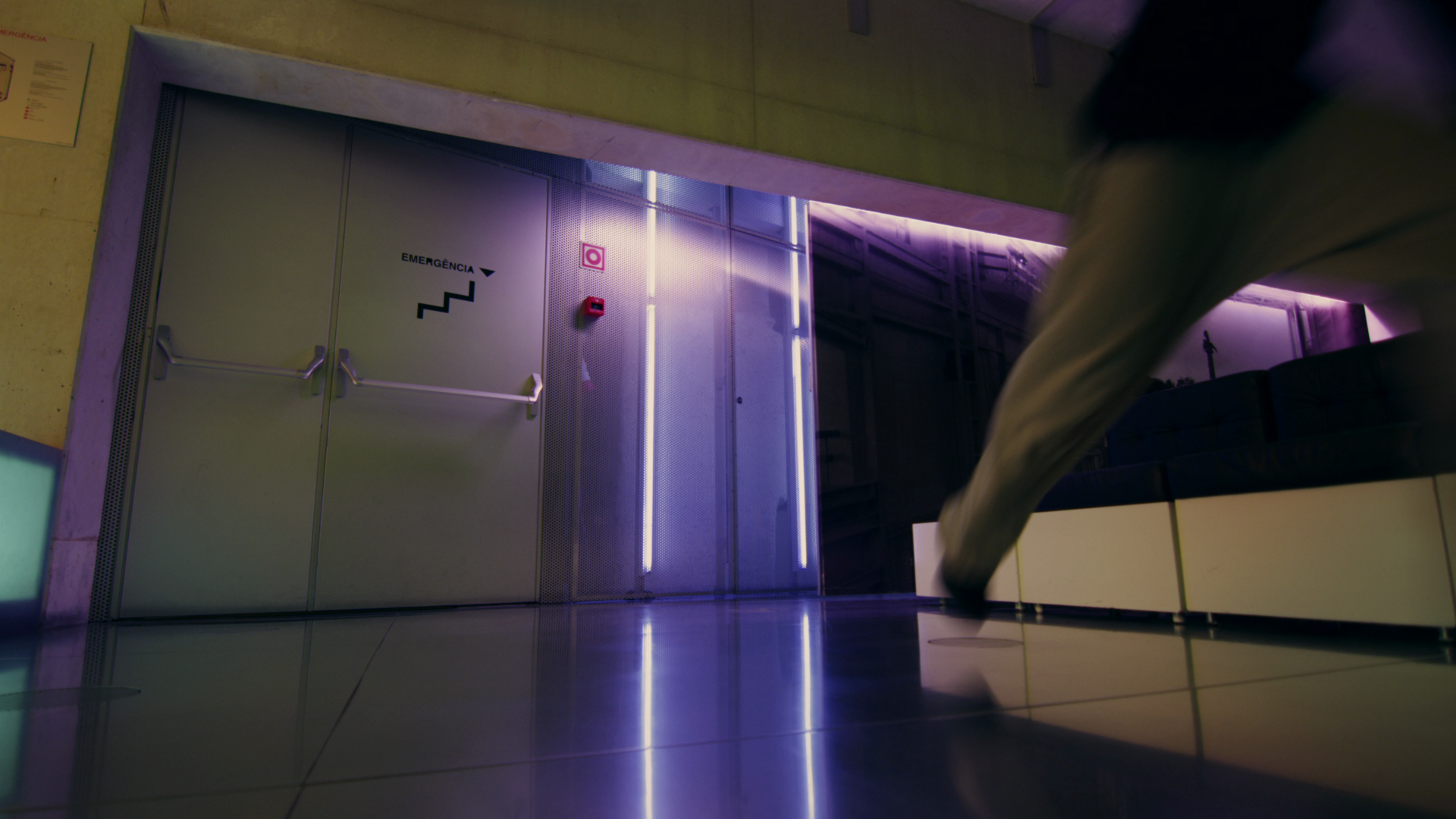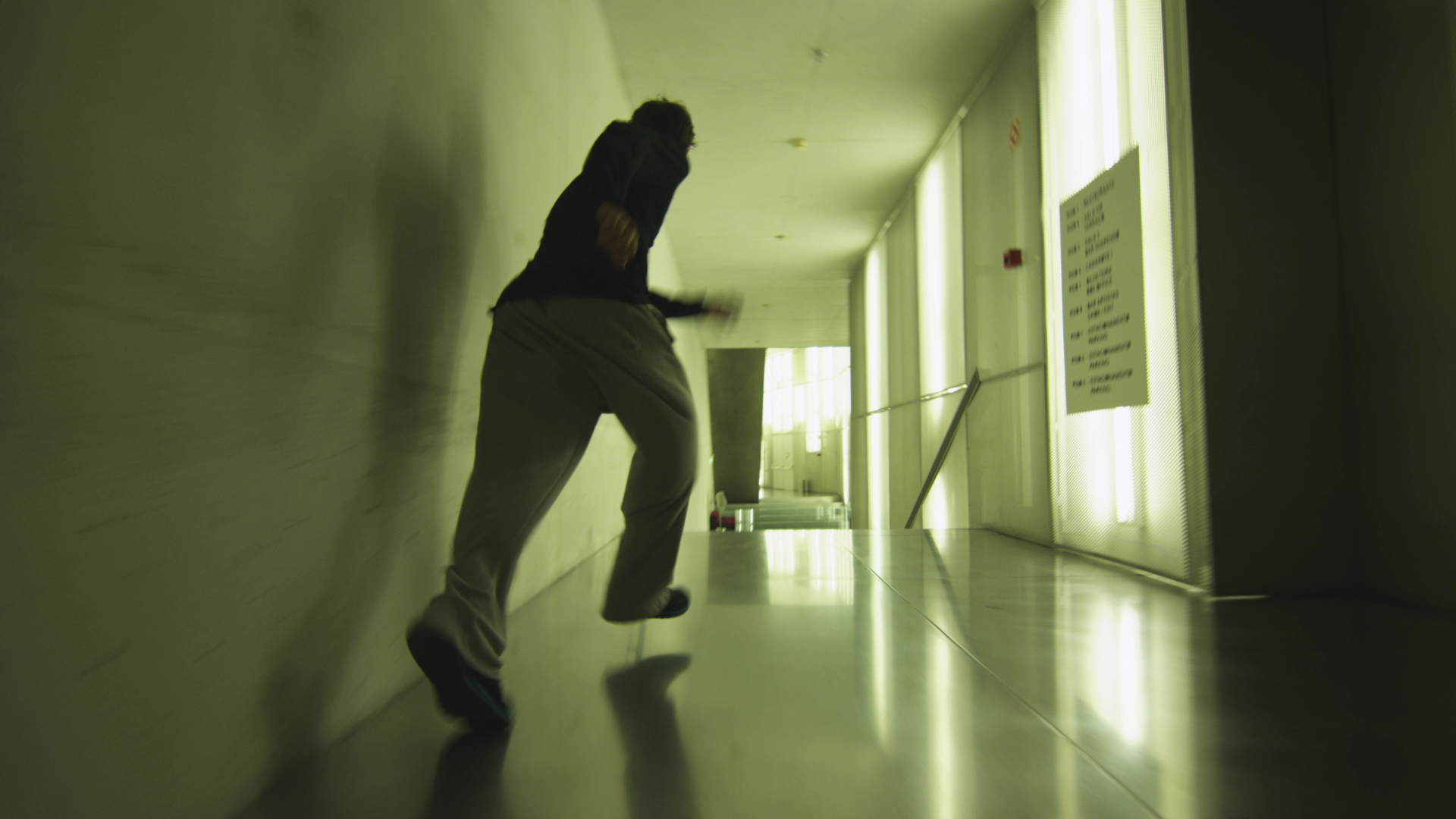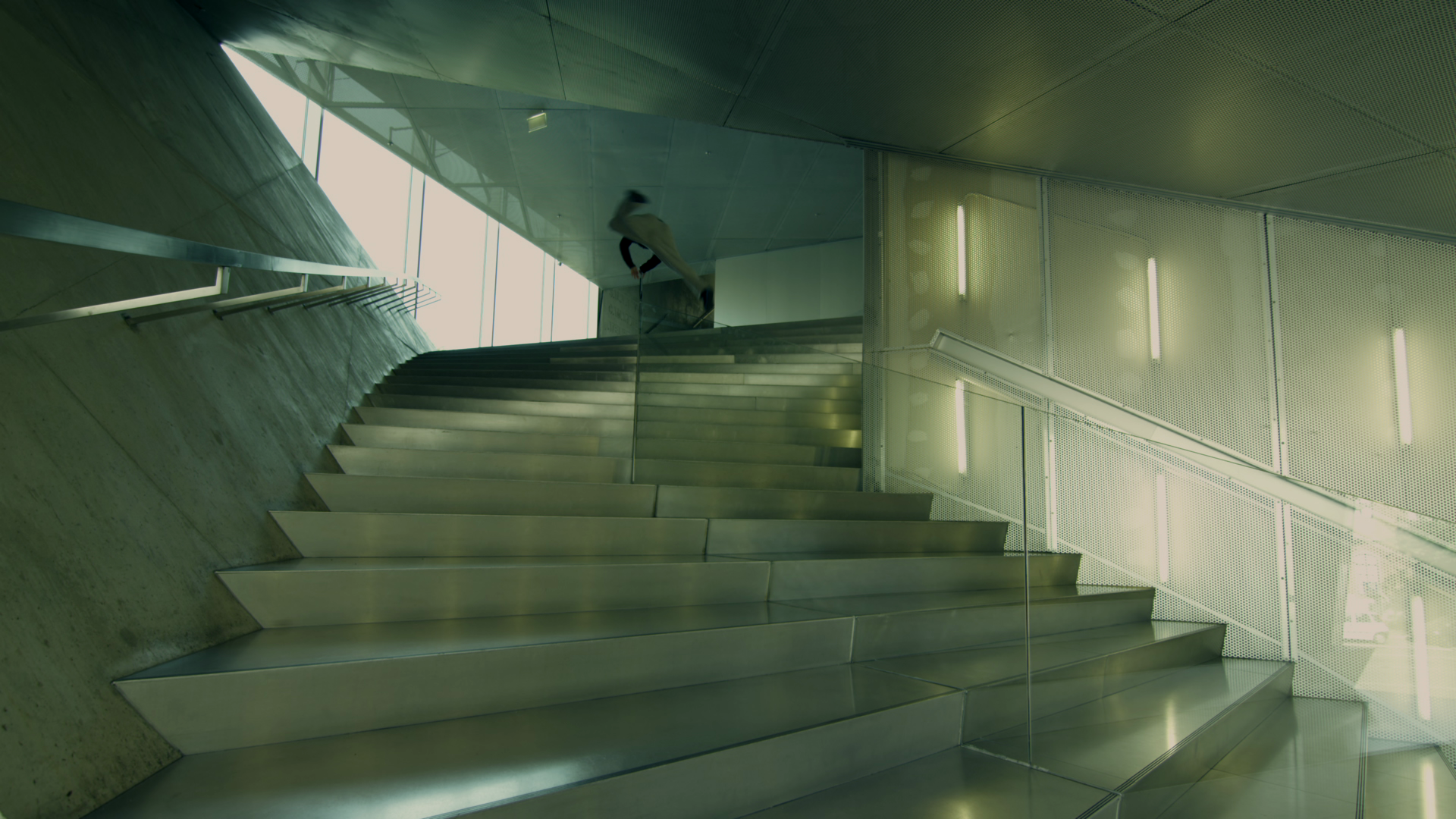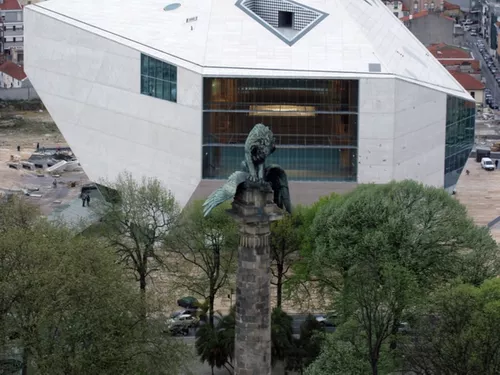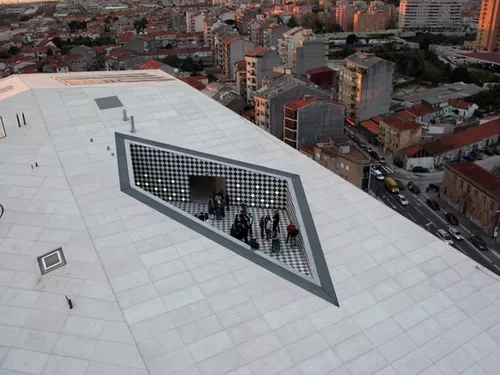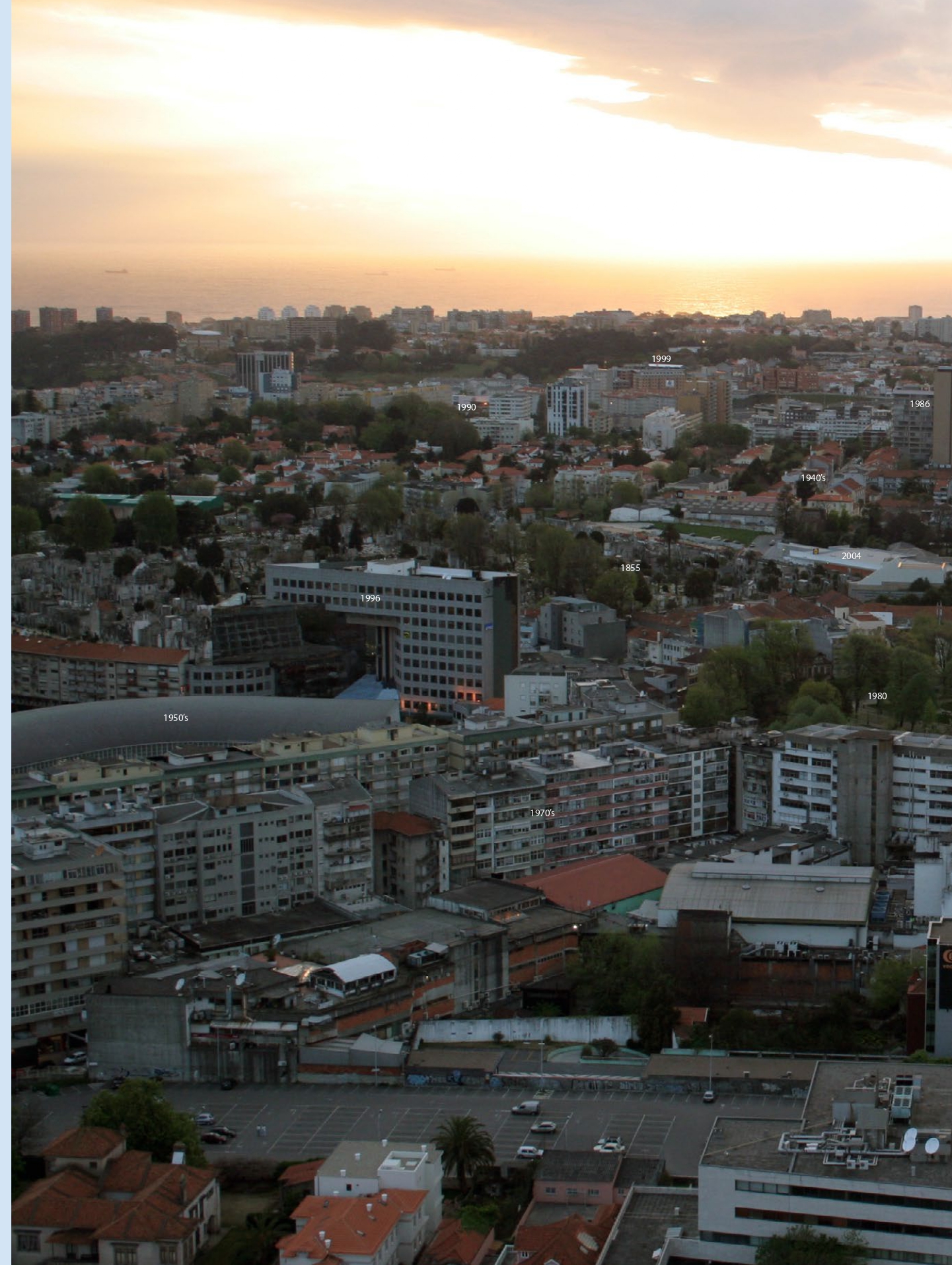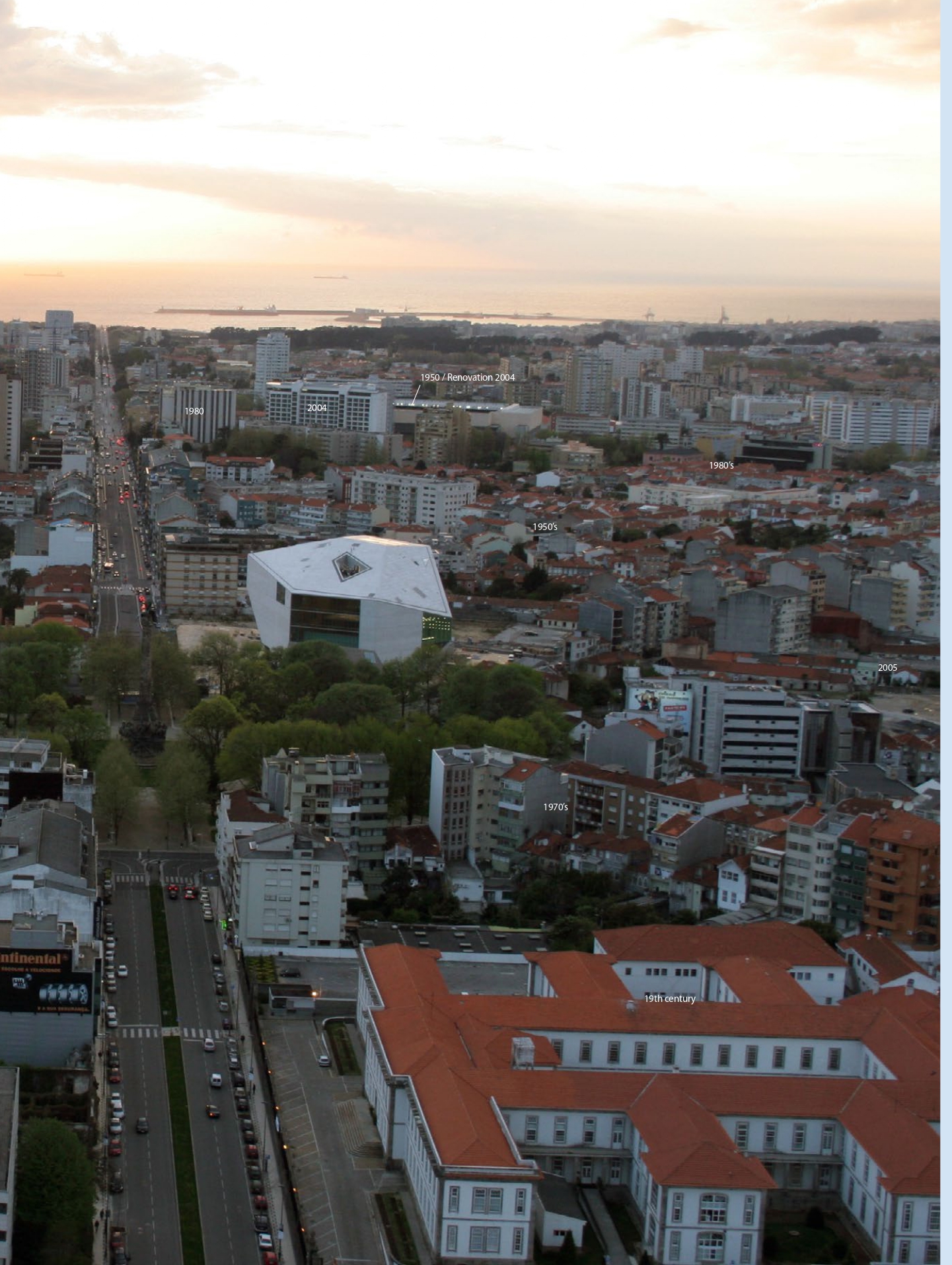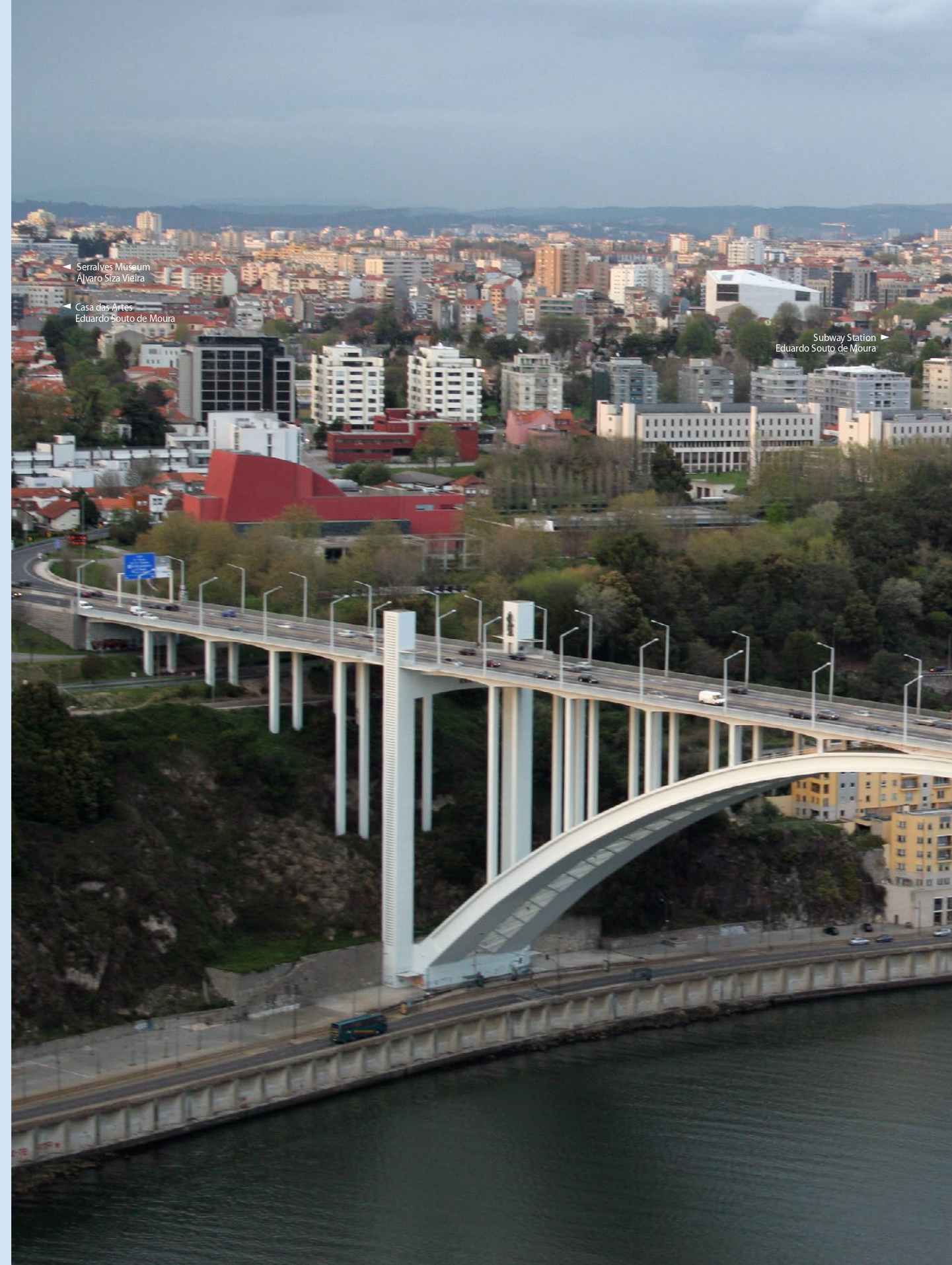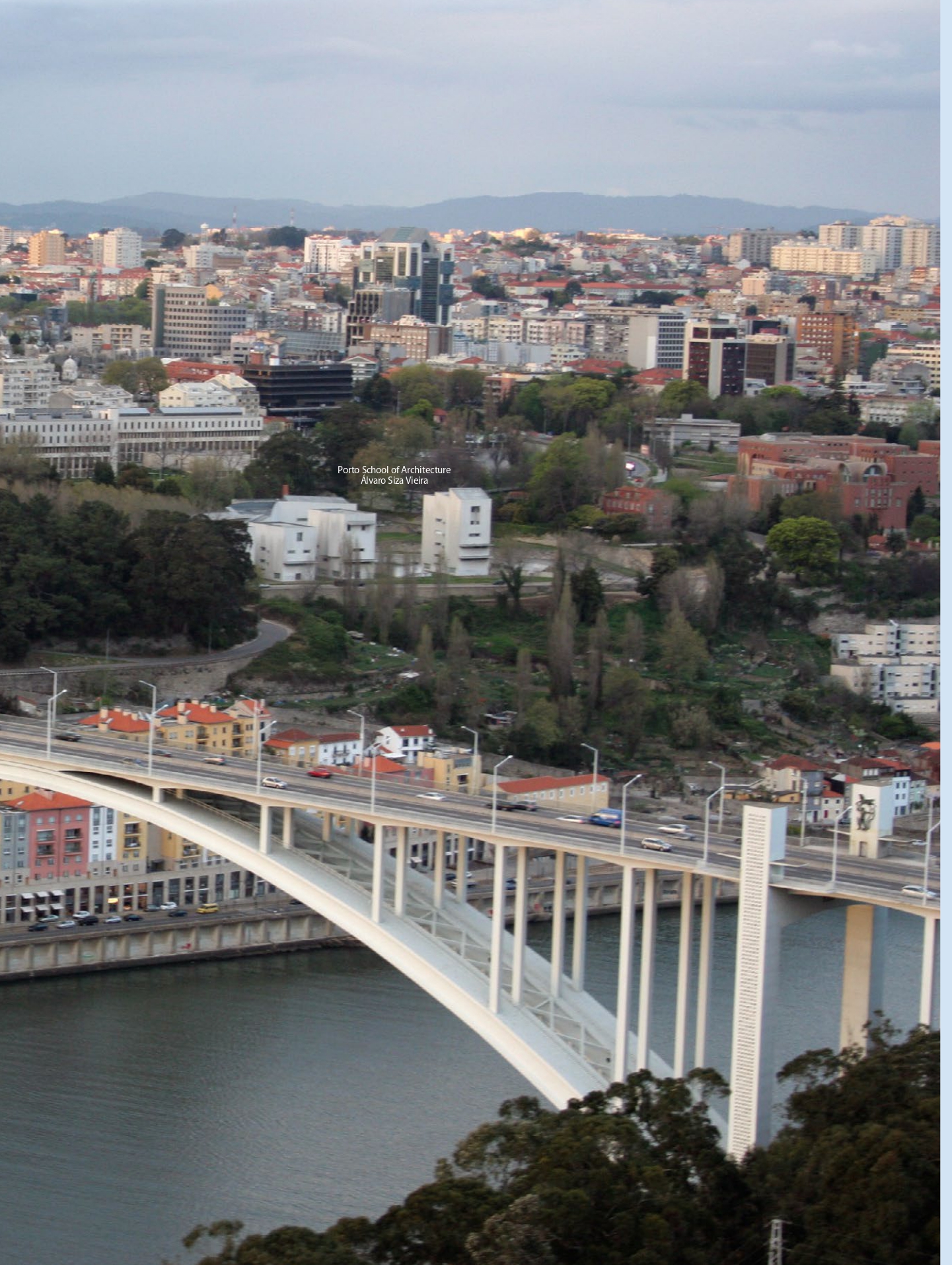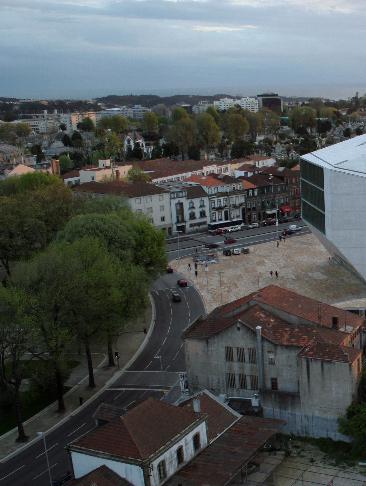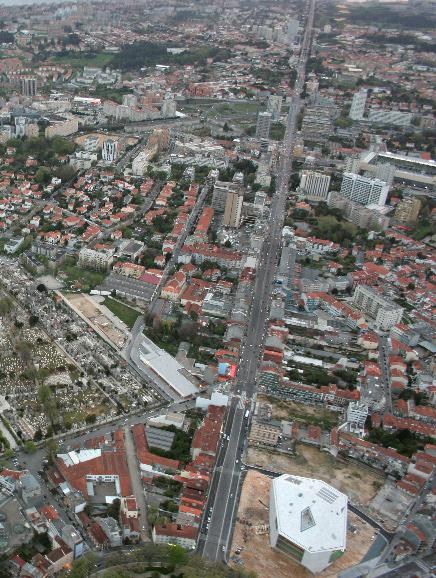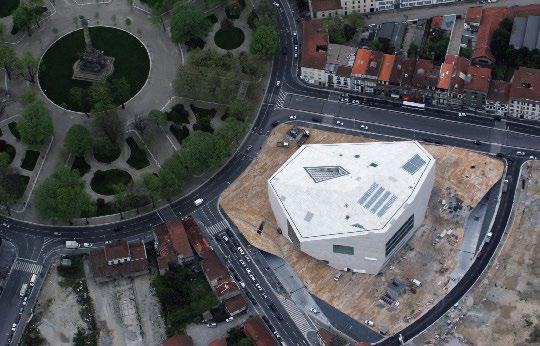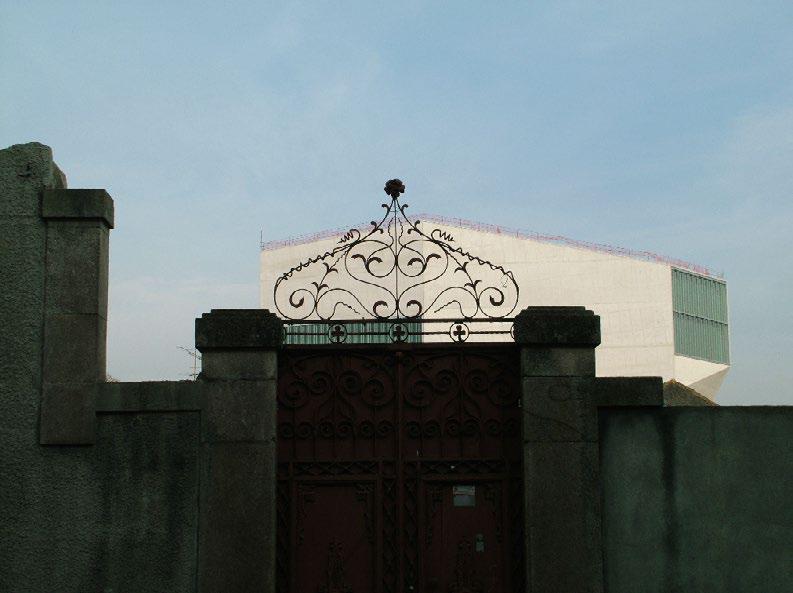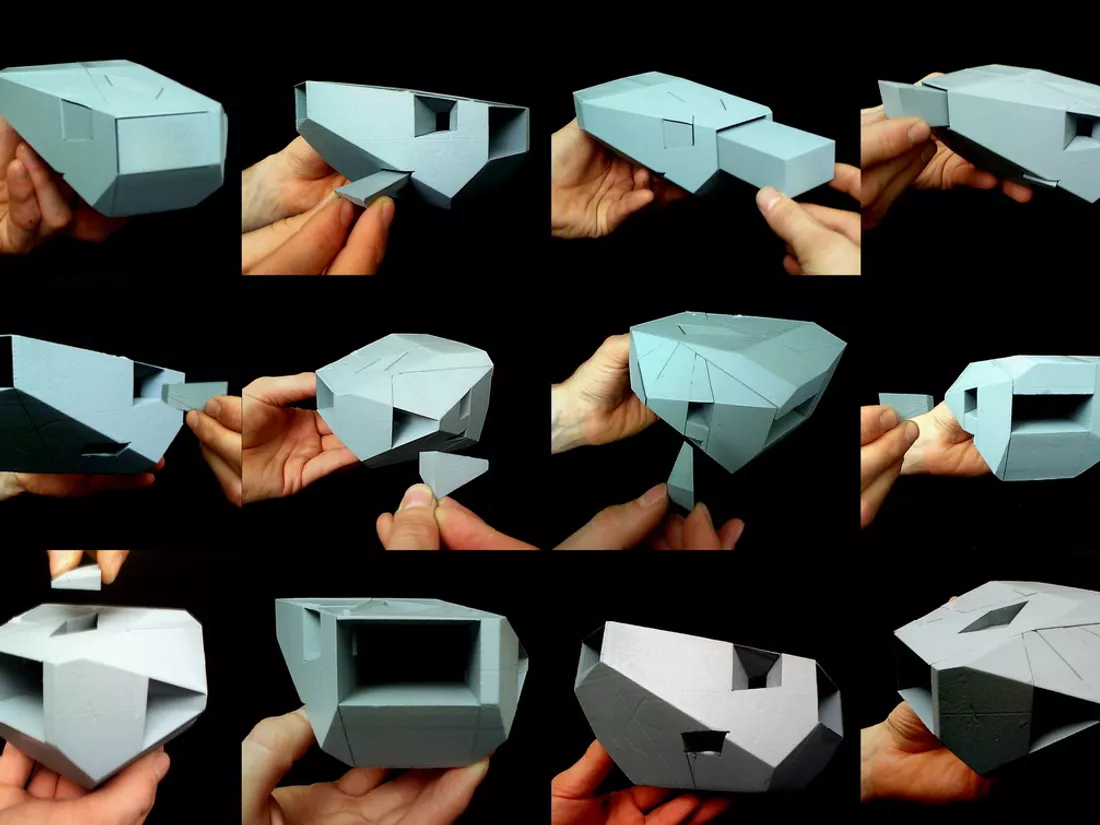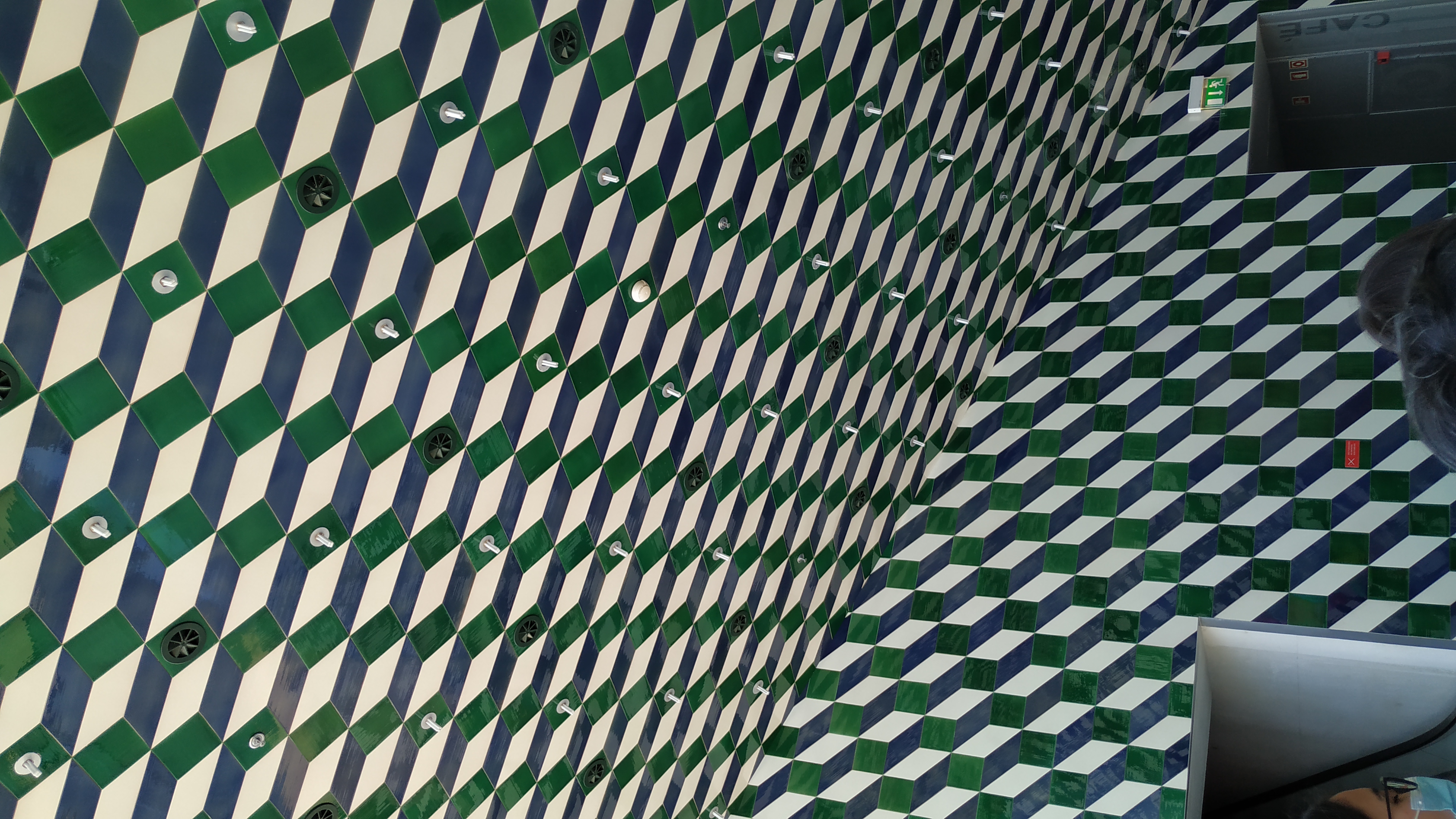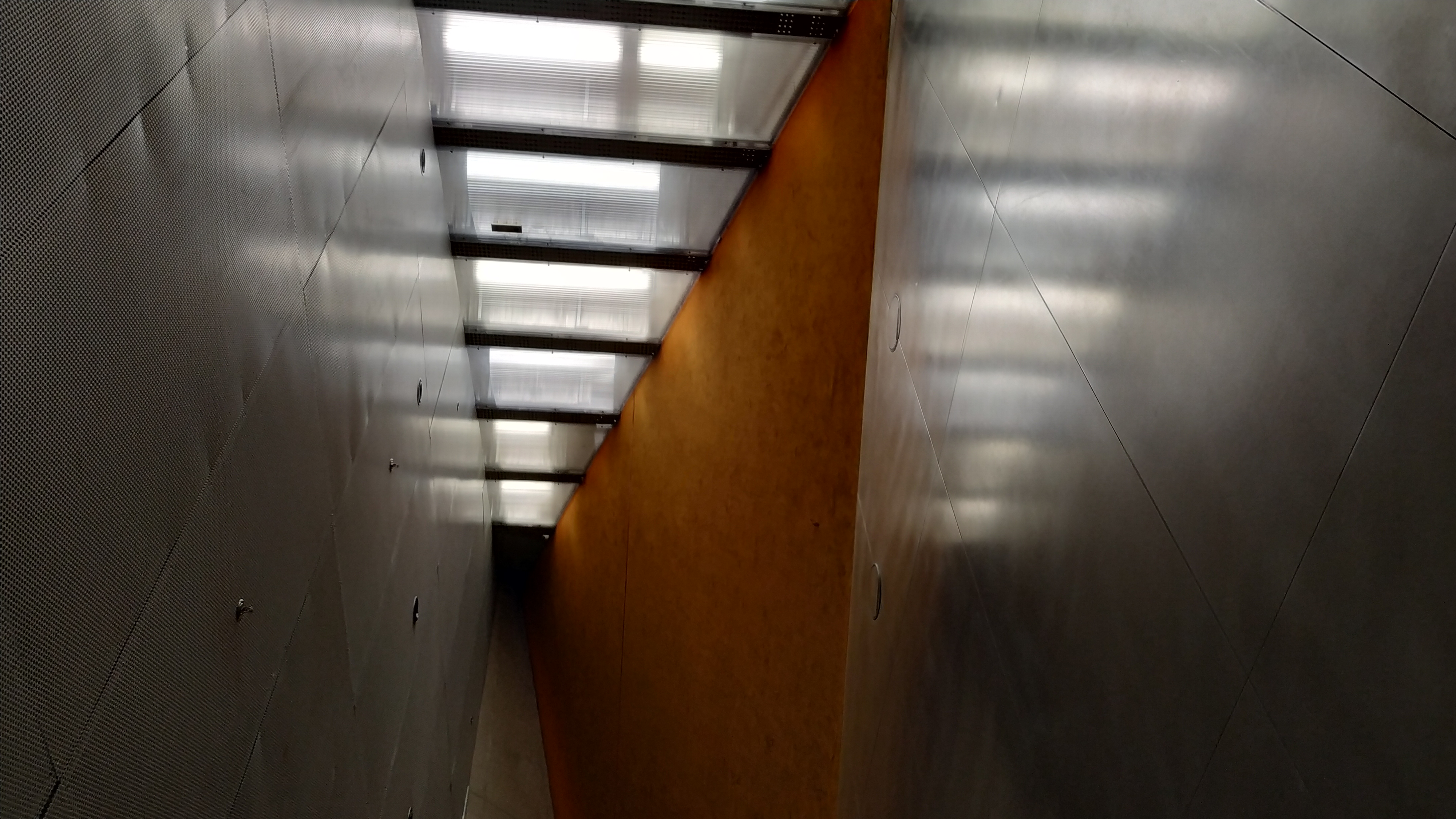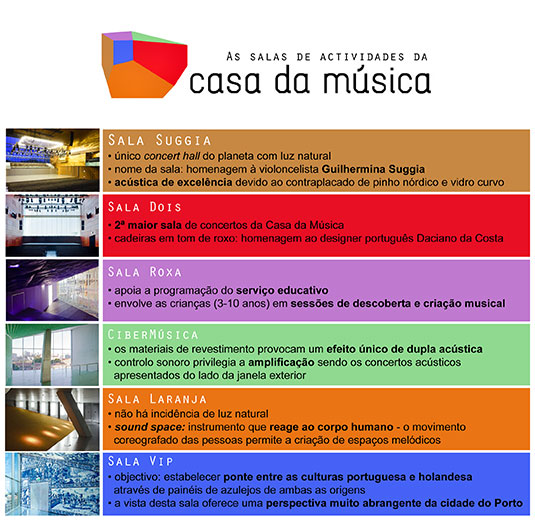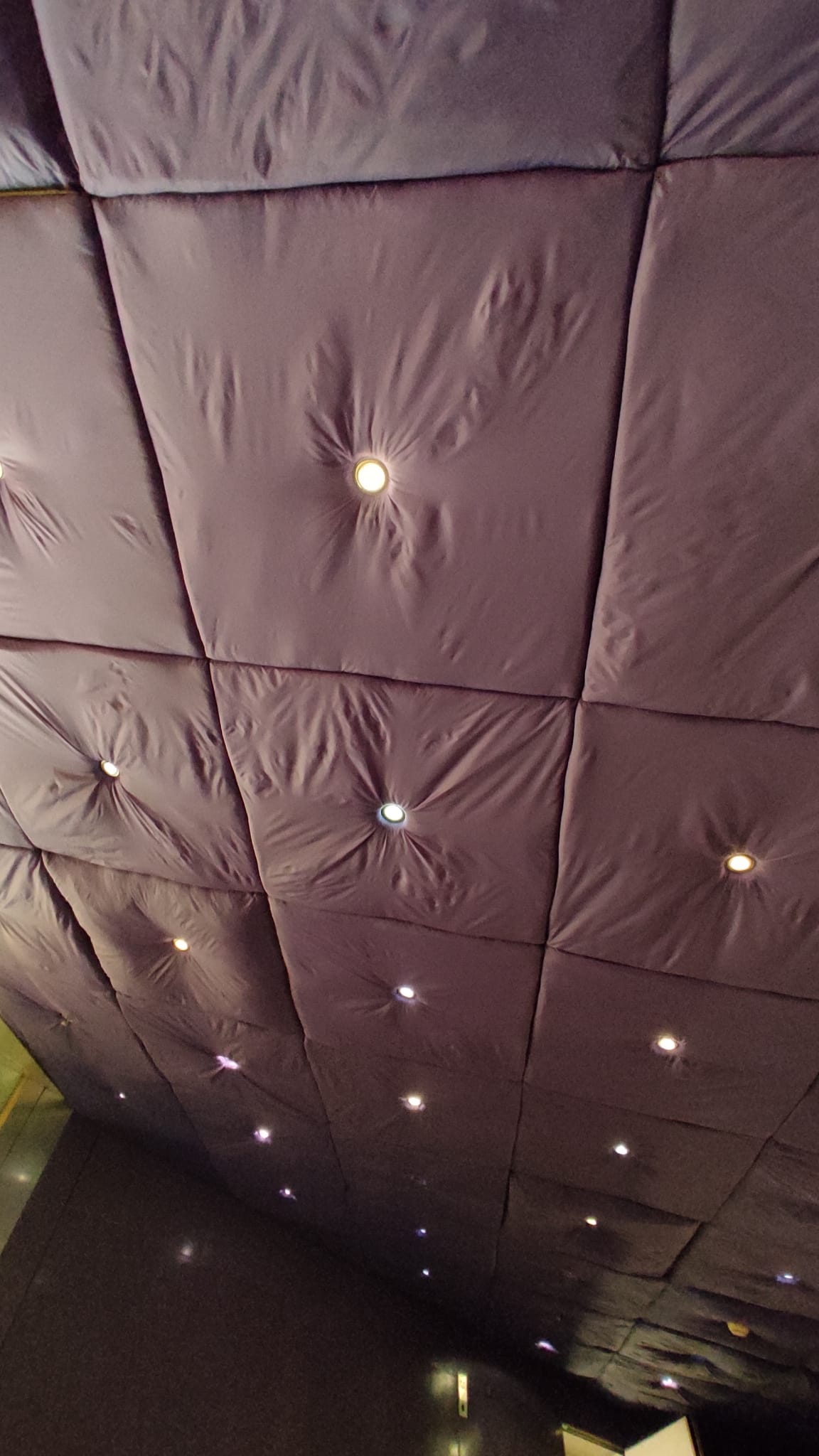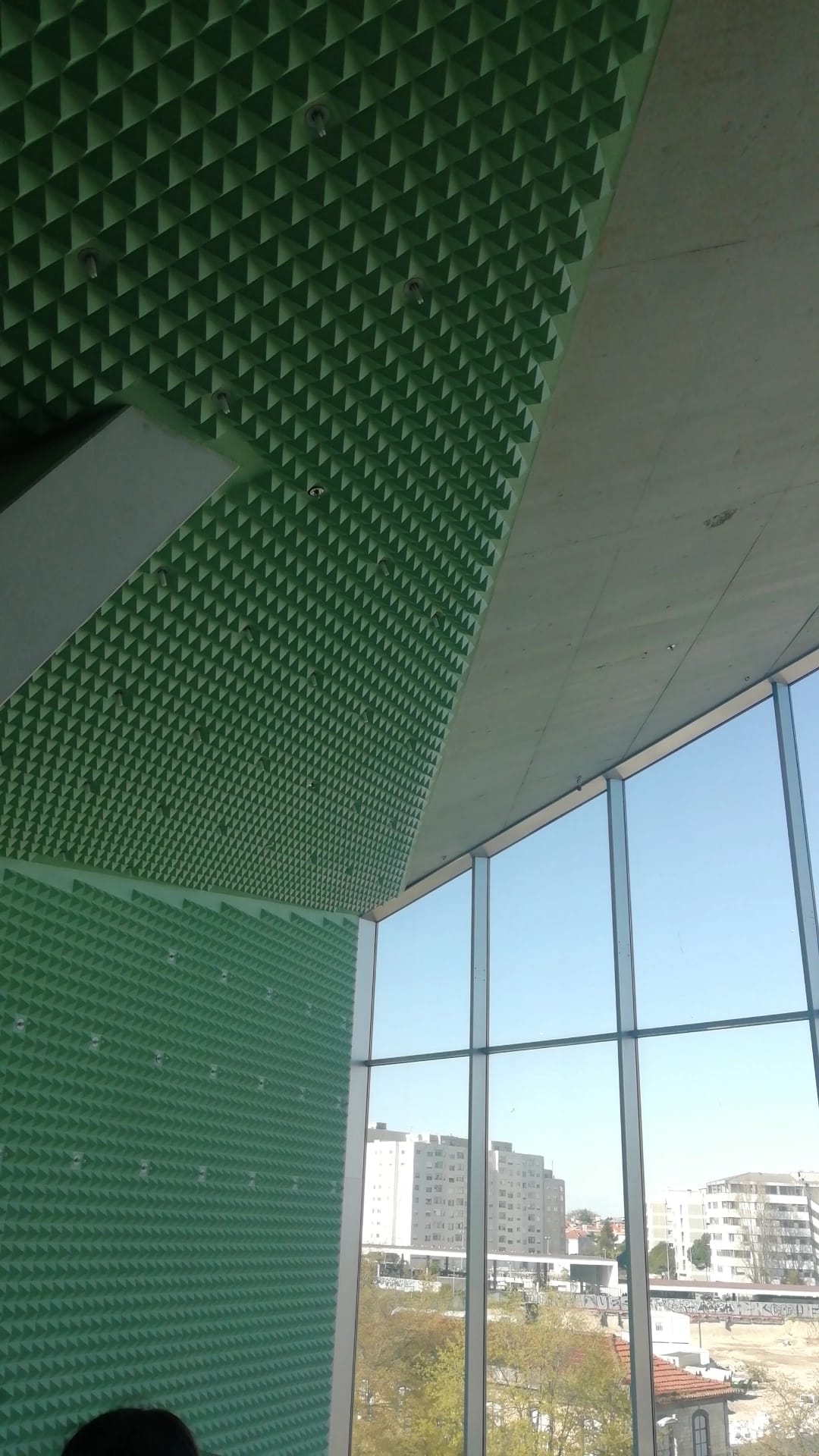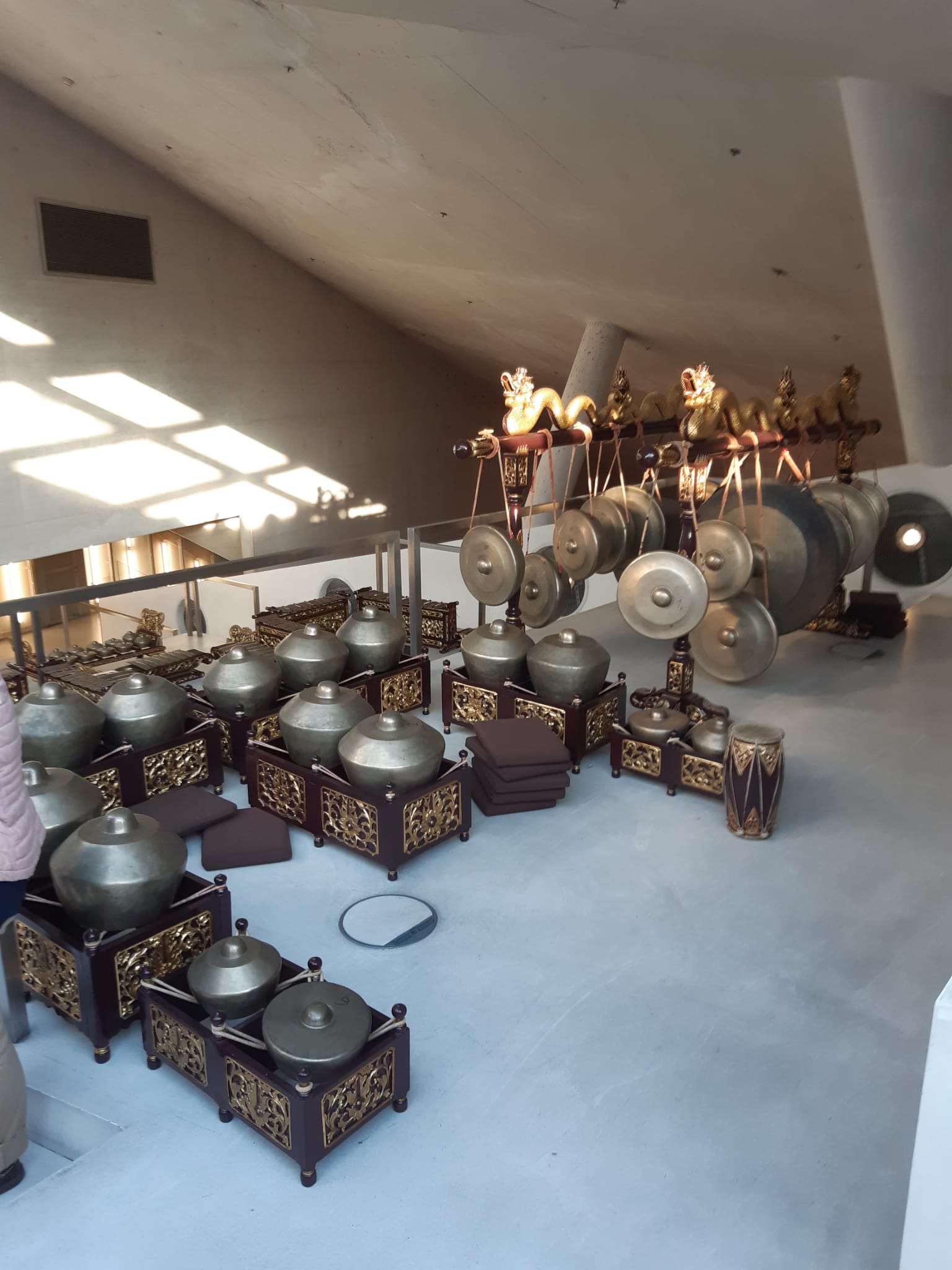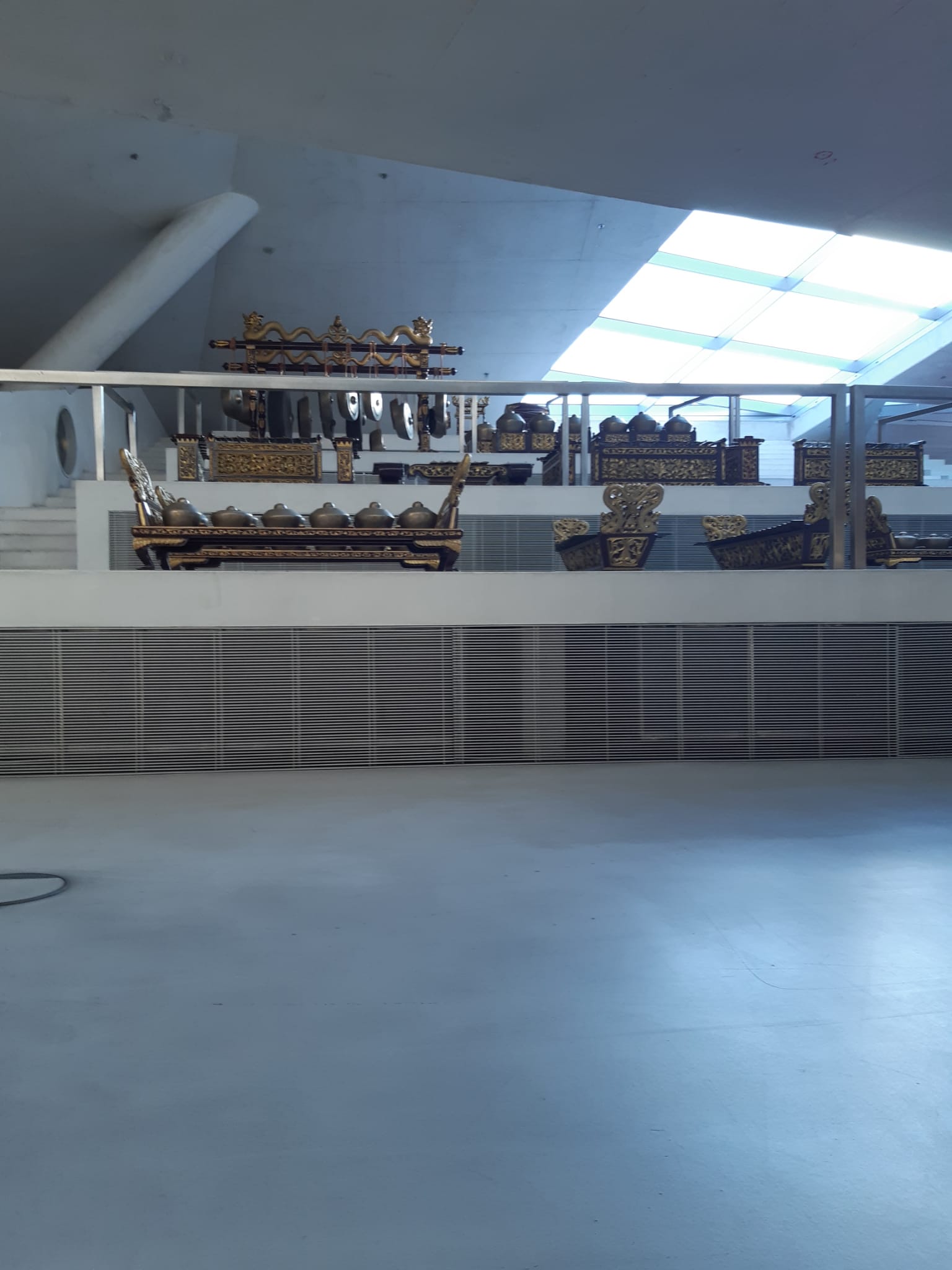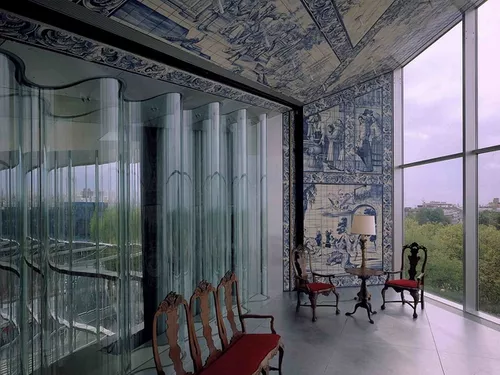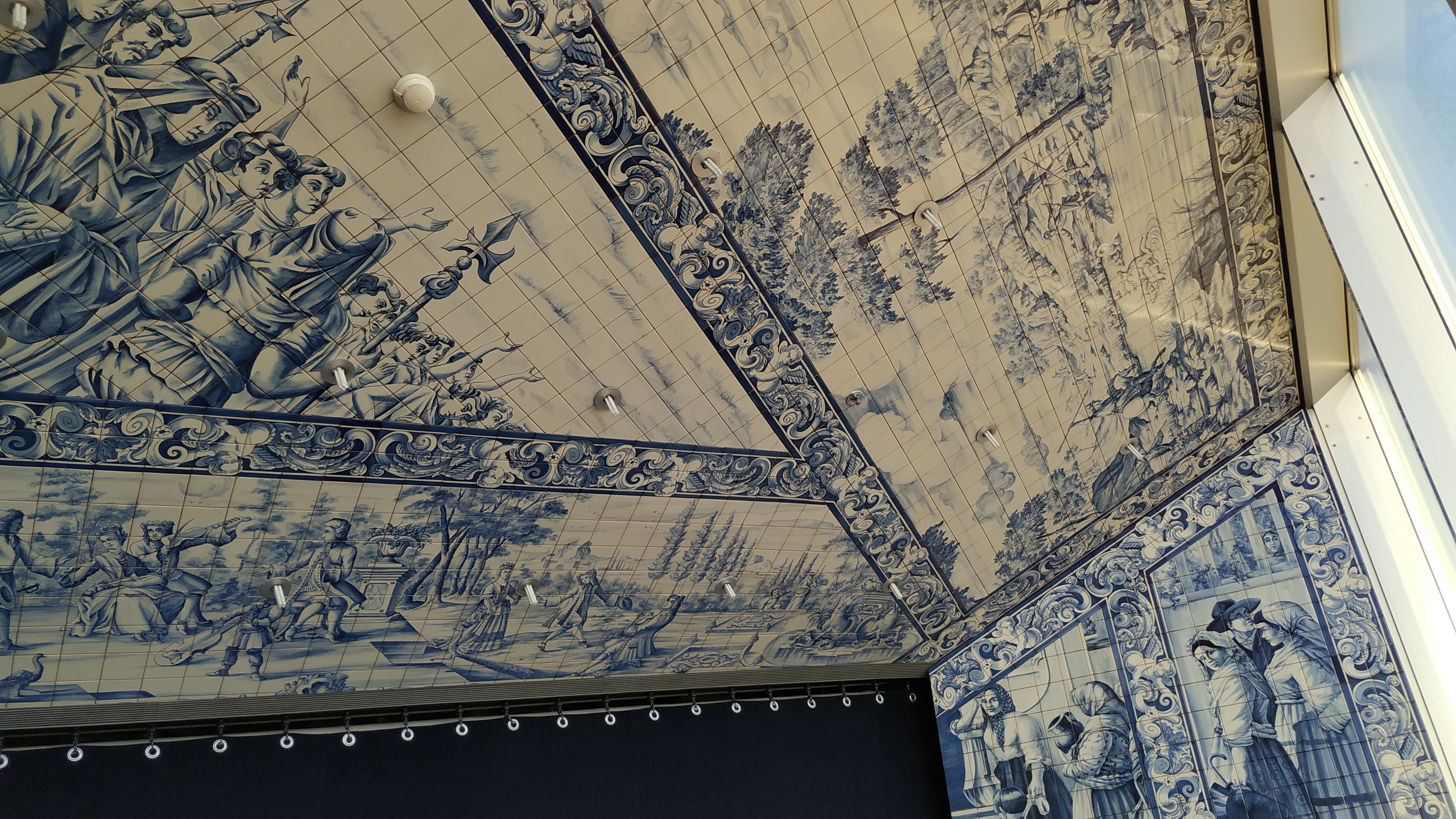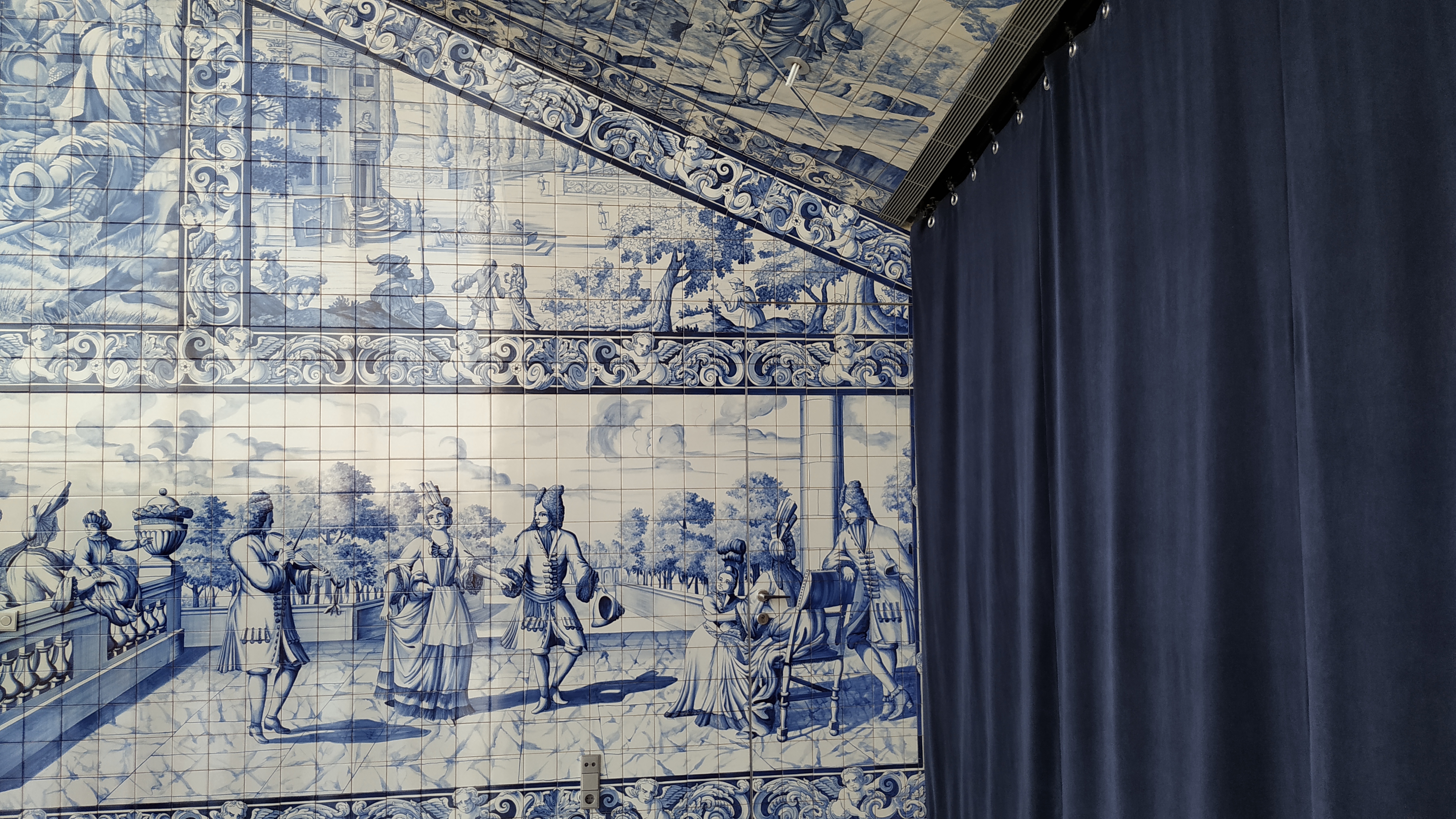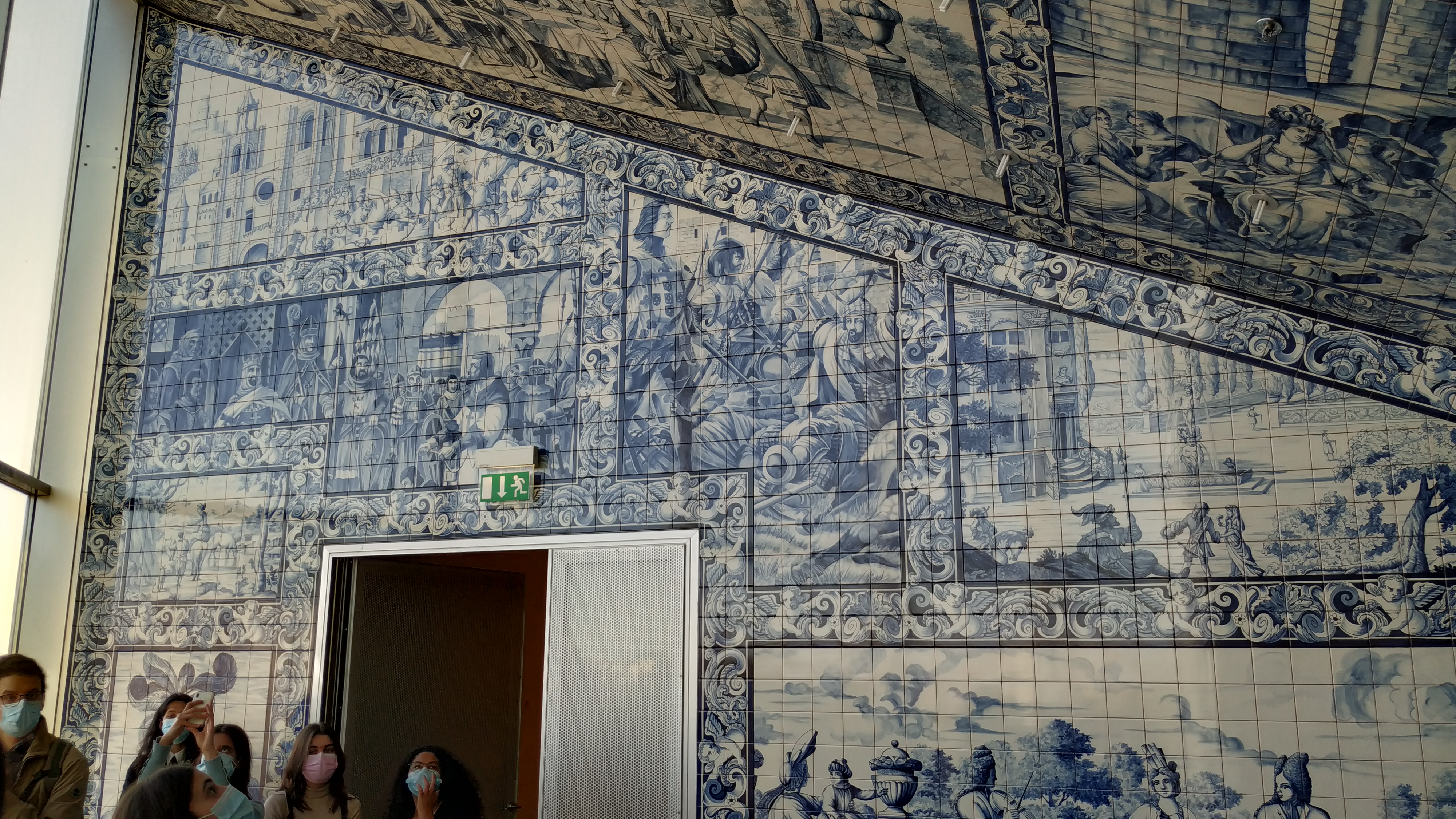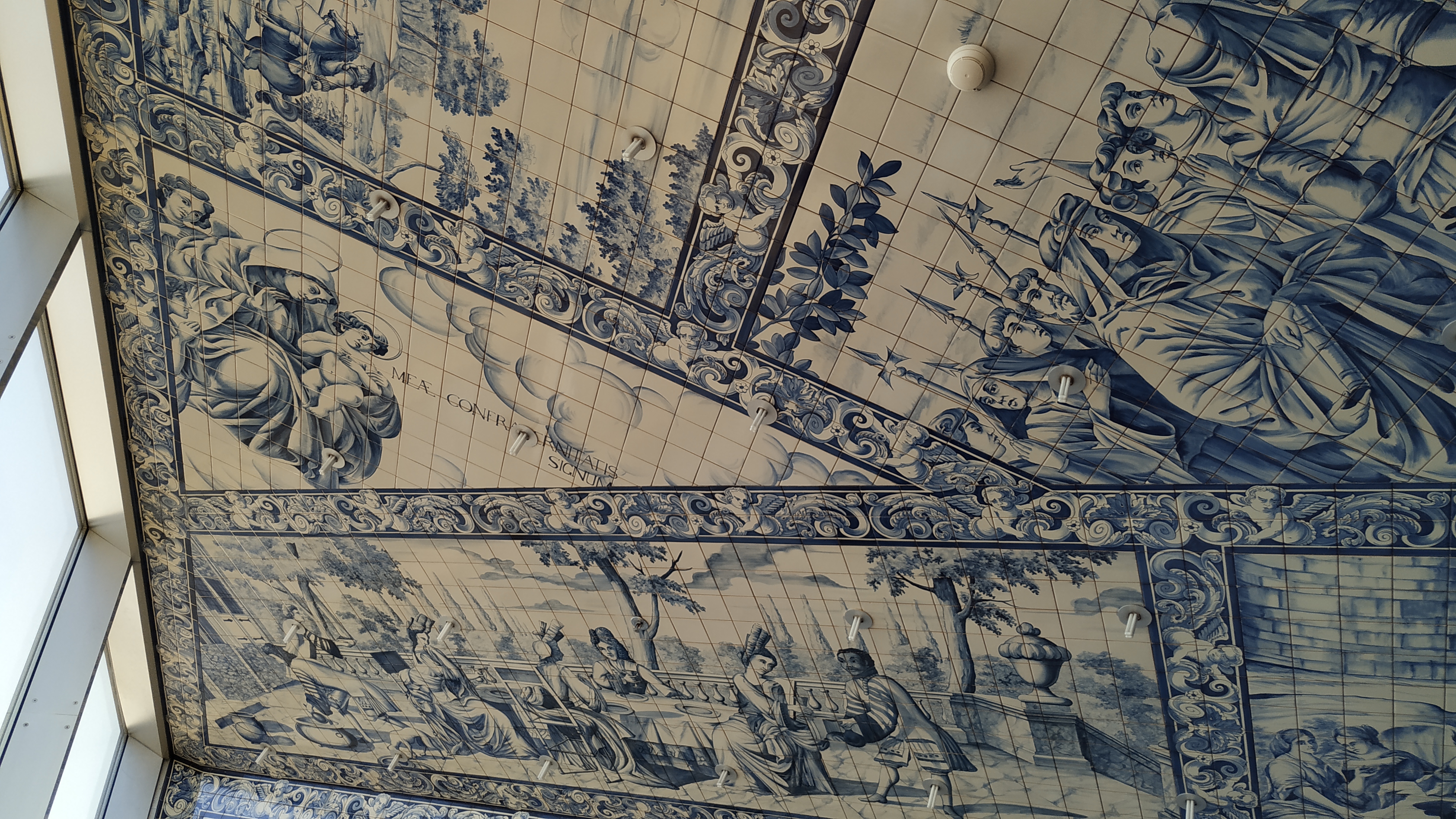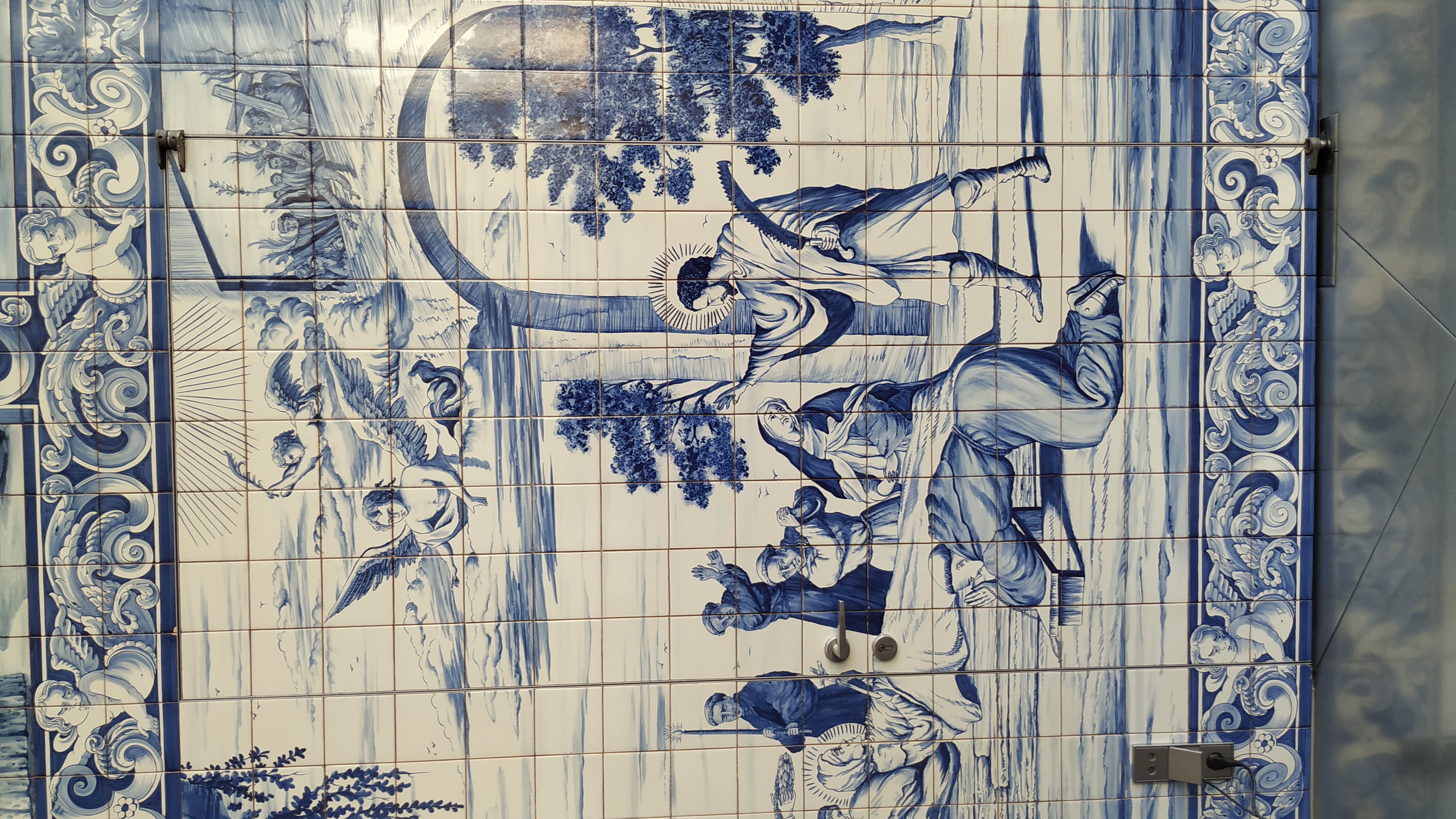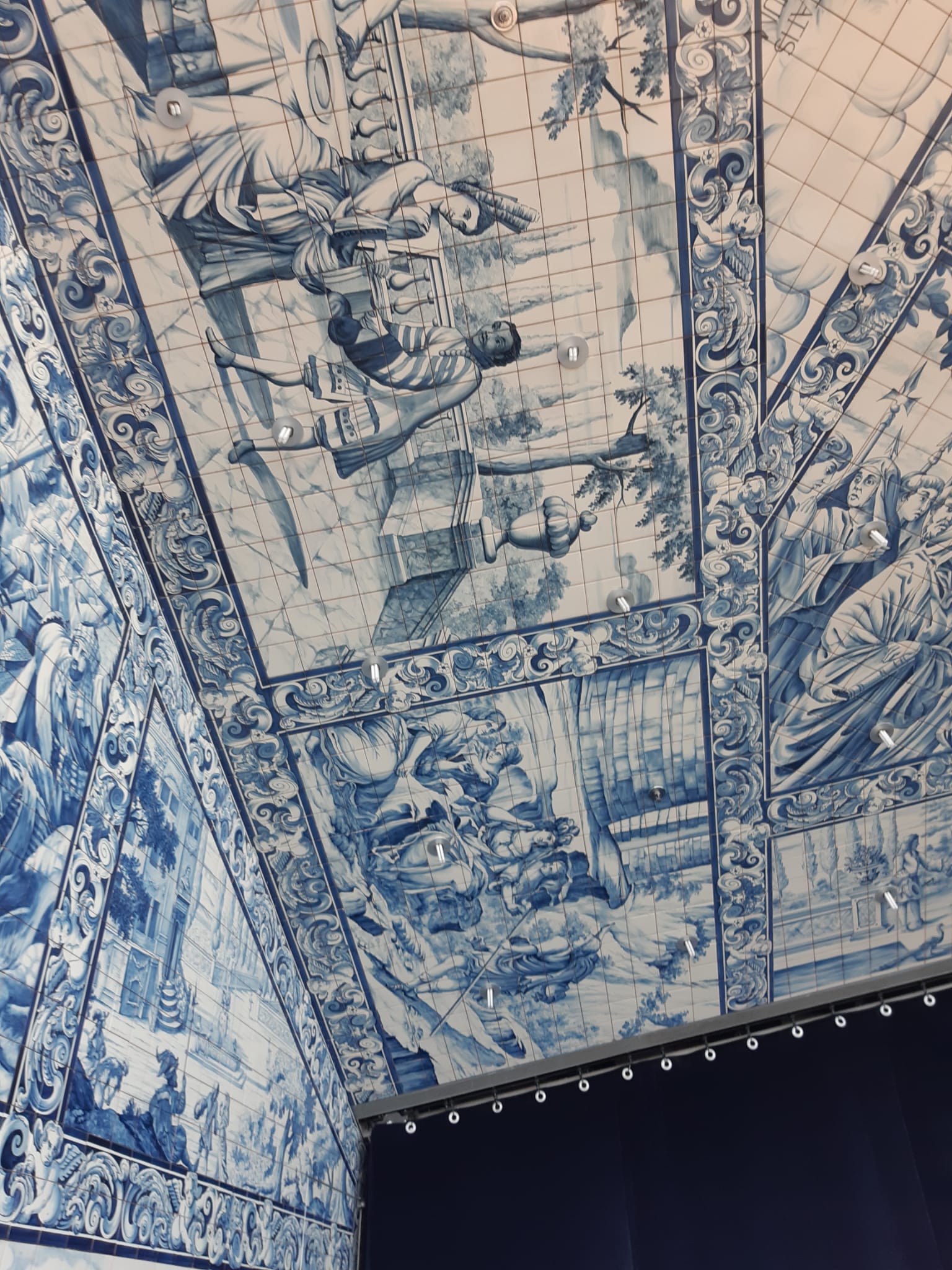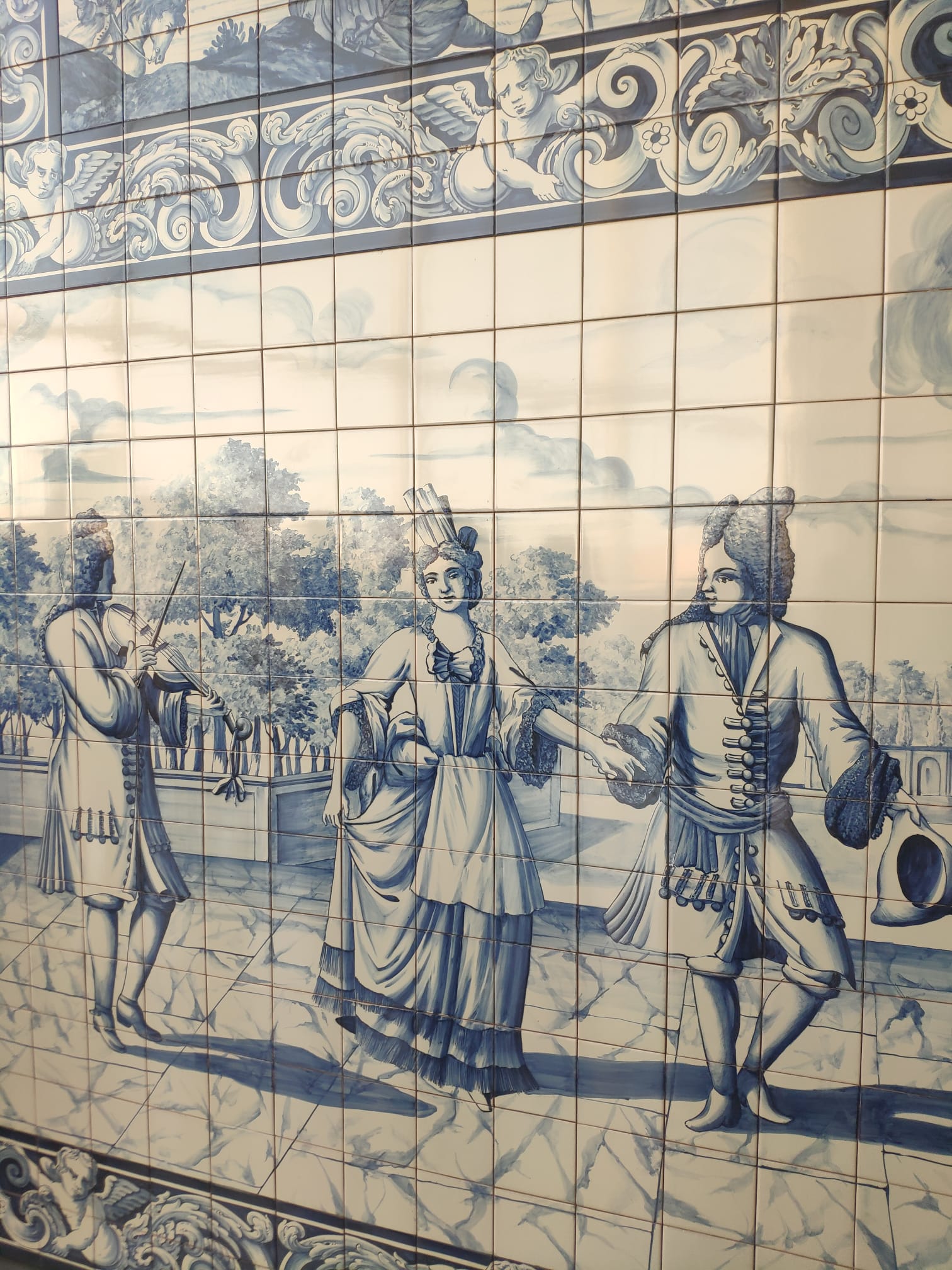The following is a portfolio of reflections I wrote for the course Música e Sociedade by Casa da Música and U.Porto/FEUP.
Ep. 1 – The entry: Música e Sociedade (2022-04-17)
Casa da Música is primarily a concert hall located in Porto, Portugal. It was designed by architect Rem Koolhaas (Pritzker Prize winner).
The project was announced on September 1, 1998, within the scope of Porto’s inauguration in 2001 as the European Capital of Culture). However, and as expected from its unusual configuration (shaped like an asymmetrical polyhedron of nine floors covered by white cement plates, cut by large wavy or flat glass windows), it was only opened in 2005.
Organisation
CdM is a non-profit public utility foundation, organised into different groups (referred to as residents):
- Orquestra Sinfónica do Porto CdM (originally Orquestra Sinfónica do Conservatório de Música do Porto (1947))
- Remix Ensemble CdM (formed in 2000 to play contemporary music)
- Orquestra Barroca CdM (formed in 2006 to perform Baroque music from a historically informed perspective)
- CdM Choir (formed in 2009)
- CdM Educational Service
- Children’s Choir CdM (formed in 2007)
Society
To understand the effect and relationship between CdM and Society, let’s explore the role of CdM’s marketing service. This may not be obvious as this is a non-profit function, and we tend to perceive this as a pure marketing method.
First of all, marketing is understood to be a diptych useful instrument:
- Value creation, that is, showing the customer that the benefit of consuming a certain product is greater than the investment required to be acquired and/or consumed;
- Make the product known to the target audience.
In the case of CdM, the product is primarily a cultural form, designed to be integrated into a habit.
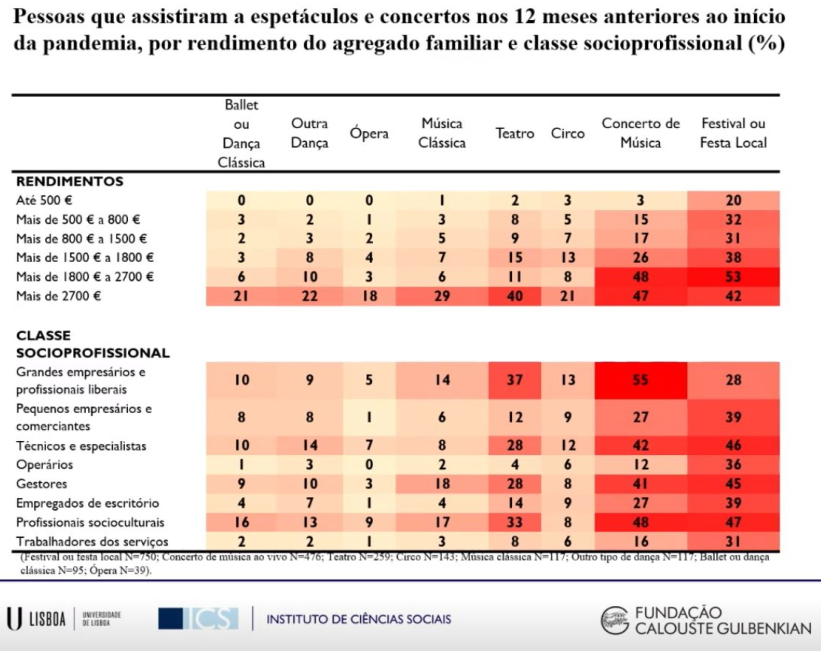
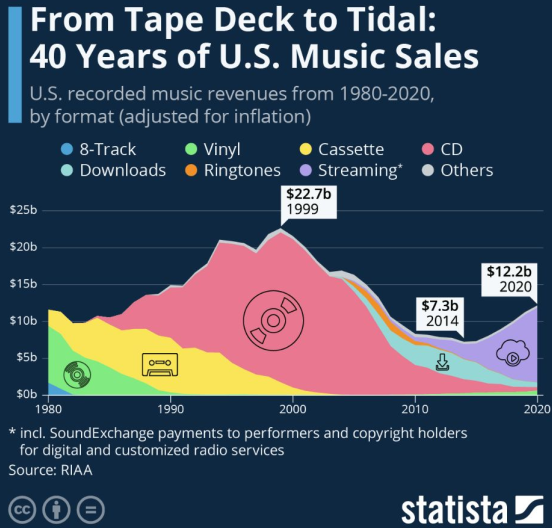
The public of this cultural form is mainly concentrated in a social circle defined by high income, musical culture, and an older age group.
Now, considering the average cost (15 euros) of a CdM ticket, and the existence of a commented format for the concerts, the question is validated as to whether “this form of music will be dated today and if it is, therefore, inadequate for the new generations”.
The challenge of new audiences
In the first instance, it is necessary to understand the value associated with the frequency of CdM activities. What, for example, is the benefit associated with a CdM concert?
Music is a fundamental aspect of all human civilizations, playing an emotional, moral, and cultural role. For example, when a Portuguese meets someone from a different culture and introduces him to “Fado”, he is automatically transmitting much of what his culture is. Thus, attending a concert is a unique experience, witnessed in a community, where we can rest, appreciate, and meditate.
The difficulty of reaching a market segment with other social characteristics
Targeted marketing, which is often done through social networks, is the one that has attracted professionals.
Personalized ads are seen as the “holy grail” of modern marketing and, according to Forbes, in a 2016 publication, it is one of the critical factors for success. Because? A study by adlucent concluded that: 71% of consumers reveal a preference for this advertising; businesses can achieve a 15% increase in profits; and 44% of consumers return to repeat purchases.
There are different levels of targeted advertising, namely: Contextual (ads on the same topic as what is being consumed by the user); Behavioral (Similar to contextual but also considers the user’s search history, time spent on each page, links clicked, pages followed on social networks, etc.); Geographically segmented; Social networks.
But if it’s so intrusive, why do users prefer it? In the same study, 46% say it reduces irrelevant advertising, 25% say it’s a way to discover new products, and 19% say it’s a way for online shopping to be faster and easier. The majority of consumers, 87%, believe that personalized advertising means unique content, based on their past purchases or behaviour. We know that businesses need advertisements and the data is used solely for these purposes and for this purpose seems legitimate.
However, in the particular case of Casa da Música, this means that the audience that the algorithm of these targeted marketing platforms will “draw” will be the aforementioned audience, which, by the way, is quite old. How to renew an audience like this? A possible answer would be to resort to alternative advertising means, however, these have some disadvantages:
- Higher investment costs;
- Greater difficulty in monitoring the leads reached;
- Less flexibility in managing campaigns (which at CdM are multiple and short-lived).
Literary Recommendations
- Byrne, D. How music works. San Francisco Calif: McSweeney’s, 2012.
This book explains concepts such as “music depends on space”, reflecting on how before there was instrumentation for recording sound, space was completely dependent on listening to music. Perhaps this is why it has become more common to say that a given piece of music is bad, it has become possible to hear it in spaces not considered in its construction.
- Small, C. Musicking: the meanings of performing and listening. Hanover: University Press of New England, 1998.
This book explains, among other things, that “Music is something that is done, not something that is achieved”. And this is the spirit of traditional music, which is transferred from generation to generation. Think virtuoso performances vs pop music – which reaches a larger audience and which is more technically challenging.
- Wold, Milo Arlington, and Edmund Cykler; An Outline History of Music, 7th ed. Chicago: University of Chicago Press, 2007
- Grout, Donald Jay; A History of Western Music, 5th edition. New York: Norton, 1996
About the engineering of a public project of this dimension, Ernesto Costa (technical director of CdM) recommends it: MacKay, P. and Pilbrow, R., 2003. Walt Disney Concert Hall. Royston: Entertainment Technology Press.
Ep. 2 – The Suggia Room: Symphonic Orchestra and Remix Ensemble (2022-06-03)
It is in the Suggia room that we can watch several concerts by the Symphonic Orchestra and the Remix Ensemble. We are currently in the “Música e Mito” cycle, under the theme “Love”. In this publication, we will observe this room and appreciate how it served three concerts, two by the Symphonic Orchestra, and one by the Remix Ensemble. Concreting, and respectively:
- “Prometheus” (2022-03-18)
- “Romeo and Juliet” (2022-04-29)
- “Love’s Fury” (2022-05-17)
Both the Prometheus Concerto and the Romeo and Juliet Concerto were acoustic. The Suggia room is the only concert hall with natural lighting, with a large window behind the stage and another at the back of the audience. How is this aspect reconciled with the acoustic requirements?
Rem Koolhaas had determined early on that he would not do without this boldness, and for the physical challenges posed by this designer, physical solutions based on curtains and a moving screen under the stage were adopted.
However, as in many works, the success that is identified after the construction and first tests is deconstructed in parts with the use and impositions of what is useful. The sun rises and sets daily at different times, so the lighting and heat that enter the room from this source vary. This requires adjustments with the blinds and air conditioning. The interior curtains (due to the absence of exterior curtains) thus serve two purposes: acoustic and lighting (this is a particular need for this concert hall).
Also in the original architectural project, there was an insistence on having the régie at a side point of the room. However, this angle does not allow a perspective corresponding to that of the public. This forced, at the very first concert, the middle of the audience, and later behind the audience.
When we look at the Suggia room stage, we notice two organs, the one on the left refers to romantic times, and the one on the right to the Baroque style.
These organs are both decorative and acoustic elements that prevent the activity of an orchestra on stage from clashing with a wall that would otherwise be continuous with the rest of the room.
The Baroque organ could not pay homage to the Iberian type in particular, as its size and horizontal tubes would be incompatible with the movement of the scenic instrumentation.
The Romantic organ had been conceived as a functional organ, with space for the respective machinery, but the funds promised for its assembly were cancelled, so it was not assembled.
References:
- https://www.jiz.pt/project/orgao-casa-da-musica
- https://cdn.sanity.io/files/5azy6oei/production/fa5532571e108d152bde2f62f8b2f20be052f490.pdf
Concerts, Program music, Instrumental music
In the 19th century, a famous discussion in terms of classical music was about the meaning of instrumental music.
Program music seeks to tell a story of some kind. Typically wordless, but sometimes the composer provides a backstory to help the viewer’s imagination frame the musical events in the drama.
Absolute music, on the other hand, has no particular story or message, it’s just music to be enjoyed and enjoyed.
Sometimes, and something that happens at Casa da Música, the programs are organised so that a narrative can be constructed, sometimes even different from the one originally conceived by the composer of a certain work. This is achieved through analogies and parallelisms.
For example, with the play “The Twilight of the Gods”, Wagner draws on the mythology of northern Europe, where he dwells on the thirst for immeasurable power, and ends his opera with this play.
However, the concert “Prometheus” at CdM ends with this same piece. Although it promised to be part of Greek mythology. For this, the play was played instrumentally, and it was up to the audience to understand how Prometheus relates to Siegfried (protagonist of Wagner’s play).
Interpreting the meaning of “Twilight of the Gods” in the concert “Prometheus”
Prometheus was a descendant of the first Titans, and his name means “the provident”, the one who is well prepared for the future, as he can foresee it. His twin brother, “Epimetheus”, was the one he saw afterwards.
One day Prometheus betrayed Zeus, for never having forgiven him for ending his race.
Because Prometheus is so fond of humans, Zeus takes the fire from humans and forces him to live among them.
But without fire, humans suffered from cold and hunger. Therefore, Prometheus, who, with the help of Athena, had already taught humans the arts of architecture, astronomy, and healing, returns to Olympus to return fire to humans.
His punishment was being imprisoned on a mountain, where he had his liver slowly eaten by a crow, and reconstructed at night.
The liver is in Greek mythology a symbol of passion and emotion. Prometheus risked, and effectively sacrificed (for he was aware of the future) his life to return to humans the fire of creativity. However, from the point of view of the gods, he sins.
There is apparent jealousy between Zeus and the achievements of humans. The sign of Aquarius is associated with Prometheus, a sign of science, intuition, and the ideals of freedom and equality.
The Twilight of the Gods is the end of a great saga, “The Ring of the Nibelung”. Initially, the conclusion of this “thriller” was called “Death of Siegfried”, denouncing the tragic ending.
The play begins by conveying a sense of risk – which we can understand as an omen and an awareness that the decision Prometheus makes will doom him.
Despite this intimidation, the music becomes warmer and makes us feel like a dream, which suggests that Prometheus is determined to follow through despite the legitimate fear and apprehension he may feel.
Siegfried learns about fear after waking up Brünnhilde, learning about fear in a way also leads Siegfried to die, “Now I’m not Siegfried anymore; I am nothing more than Brünnhilde’s arm”, he says after offering her the ring he once so greedily held. Symbolically, Wagner shows us that the awakening of life, and love, coincides with death, leading to a world of compromises.
In the same way that the curse to which Siegfried was subjected uses Brünnhilde as an instrument for his downfall, so the love that Prometheus feels for humans leads him to his tragic fate. At the end of the piece, we hear a sound that decreases in rhythm and intensity, as if it is fading.
The fine line between program music and absolute music
These transformations, reductions, and malleability refer us to what will be the most important teaching of Topology in mathematics. In topology, we study the properties of a geometric object that are preserved under continuous deformations. The way we understand music can change severely depending on the context, space, and meaning we are looking for. But the emotions that arouse in us usually remain, only our mood and mood may not be the most receptive given the context and temporal moment.
Classical and Contemporary Music
Why are 1920s classical plays so strange and incomprehensible to the general public?
The melody is not very clear, and the harmony is not very intuitive, sometimes resembling random sounds. The great composers, after Debussy, began to write pieces that were not very digestible for the general public.
The same happened, at this same time, in all segments of art: in painting, sculpture, poetry, literature, and dance.
When we look at history, we see that tonal music (with defined harmonies that work according to the main tonality), reached its maximum, in terms of harmonic sophistication, complex structure, and perfect counterpoint. This is the middle of the 18th century, with Bach. Then came the height of beauty, with gallant music (composers such as Mozart and Haydn), which was designed to be played in salons. In the second half of the 19th century, the maximum was reached from the harmonic and orchestration point of view with Liszt, Berlioz, Mahler, Richard Strauss, …. The latter twisted tonal music through chromaticism so that no other major innovation could be made within this tonal system.
Thus, the path of evolution was to reinvent or even deconstruct the tone system: to implement atonalism. In this one, the choice is made based on what sounds best, rather than following a logical path of tonal proximities based on cycles of fourths and fifths, as in 99% of the songs the average person listens to today.
The same theory can be applied to the visual arts: the artist reached such a high level of the portrayal of reality and virtuosity, that he started to portray what was unreal, bizarre, and irreverent.
Thus, when artists were faced with this situation, and with the chaotic scene in which Europe found itself when the great wars began to break out, they did not hesitate to create musical avant-gardes with completely new values and parameters. This appears, for example:
- serial music, where the rule is not to repeat any notes until the 12 notes of the scale have been played (in a sense the opposite of tonality);
- electroacoustic music, which mixes electronic noises with sounds recorded from various sources (reminiscent of late 90s Bulgarian horror film soundtracks);
- spectral music, which is based only on sounds;
- Neoclassicism, reinvention of classicism with other parameters.
This song portrays the European scene at the time well. It is as if the forced renewal that the war was about to bring extended to music. Music was no longer made for the church, to please the king, or to please any traditional audience. The limit became the composer’s creativity.
It is then that Jazz begins to fall into the graces of the general public. After Jazz, in the 40s, Bolero. And in the 50s, the emergence of Rock. And at this point, the reality of classical music changes drastically. For the fusion of a pop artist with a sex symbol through Elvis Presley emerges – the vocalist’s figure becomes a ready-made product: musical talent, behaviour guide, and even life philosophy. And with all these distractions around the figure of the artist, the music starts to take a back seat.
Due to the path of great disregard for the common public that contemporary music took, pop music was practical without any competition. This is how the “mega bands” (Beatles, Rolling Stones, Pink Floyd, …), and the great music production industry condemned classical music to the spaces it finds today.
Can one conclude from this that contemporary music (or even contemporary art as a whole) is bad and that composers have simply lost their minds?
No, there is great musical talent and knowledge in contemporary music and art. Music depends on space. And being good or not depends on whether it fulfils its objective in a given context. Contemporary music was made by musicians and for musicians, and it fulfilled its purpose, in its space.
References:
- https://en.wikipedia.org/wiki/Who_Cares_if_You_Listen
- https://youtu.be/azpxUnIgsts
- https://youtu.be/Kr3quGh7pJA
- https://soundexpertise.org/cold-war-money-and-new-music-with-eduardo-herrera-and-michael-uy/
- Vargas Llosa, M., Rodrigues, C. and Guerra, A., n.d. The civilization of the spectacle.
Ep. 3 - Beyond the concerts (2022-04-13)
Previously, it was mentioned that music depends on spaces, that music is something that is done, and that, unlike other forms of art, after “doing” it disappears.
The CdM is an enormous solid, monumentally pierced by the Suggia room. Elevators, stairs, ramps, and corridors can also be understood as perforations of this solid, which thus create “voids” in something that we could otherwise see as a cut stone, resulting from the impact of a meteorite, and which today is presented in a luxurious piece of fabric (soft pink travertine rug).
In this building, we feel different shapes being created as we walk through the different rooms, and these disappear when we enter these corridors. The most exciting moments of a visit to the house are the intersections of spaces, when one space meets another space, in an unsettling sensation of complete transparency through both.
This project was the result of a cancelled order to OMA, the “Y2K House”, where it was intended to have a common space for the family (core/living room), with surrounding spaces that absorbed everyday life (hiding all the confusion and compartmentalizing everything in an organised and structured way). This idea of absorption, in the case of CdM, extends to various structures scattered around the square – a bus stop, a café, the entrances to an underground garage – as if these practical elements were being swept under the carpet of travertine. CdM naturally forced an extreme change in the scale of the project, which transformed the expression of the requirements of a single client, not into a simple public institution, but an institution for the public.
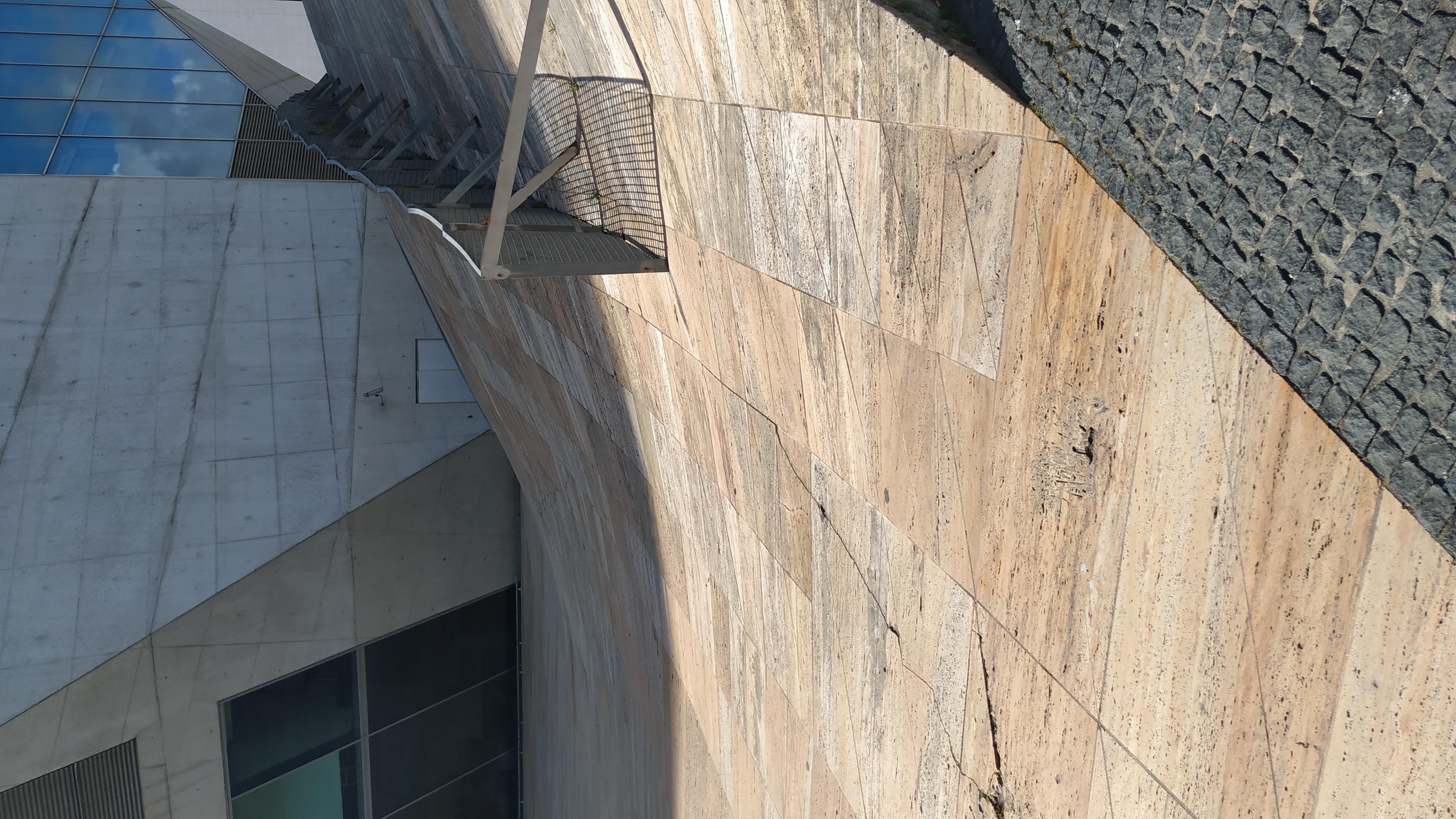
It is difficult to exhibit/present the CdM through photography, the best illustration would likely be through a Cubist painting. In 2007, the Royal Institute of British Architects (RIBA) awarded Rem Koolhaas for outstanding contributions to architectural design in Europe. The jury described the CdM as “intriguing, unsettling, and dynamic” and noted that it “promotes spaces of excellent acoustics for the performance of all types of music while fulfilling another contemporary role as a strange, enigmatic, and compelling object in urban form.” of the city of Porto”.
This “contemporary role” mentioned by the RIBA is a curious aspect, it is difficult to compare a construction built at the end of the 20th century with the other buildings in the city, which are mostly from the 17th and 18th centuries. intrigued by its shape, it is hard to argue that it differs – particularly insofar as it maintains a respectful distance from public roads, despite its dimensions.
When it is said to be designed for the public, this is not limited to those who visit its interior the Suggia room is the only concert hall with natural light. It is the only concert hall in the world with two walls made entirely of glass. As a result, its 1300-seat auditorium is bathed in daylight. The spirit of this house is not elitist, but that of making so-called elitist music accessible to everyone. While people often only know the exterior shape of multiple cultural institutions, in the case of CdM it is not only possible to observe the interior when looking at the building, but also to get a sense of the activity inside the house through the sound indicators.
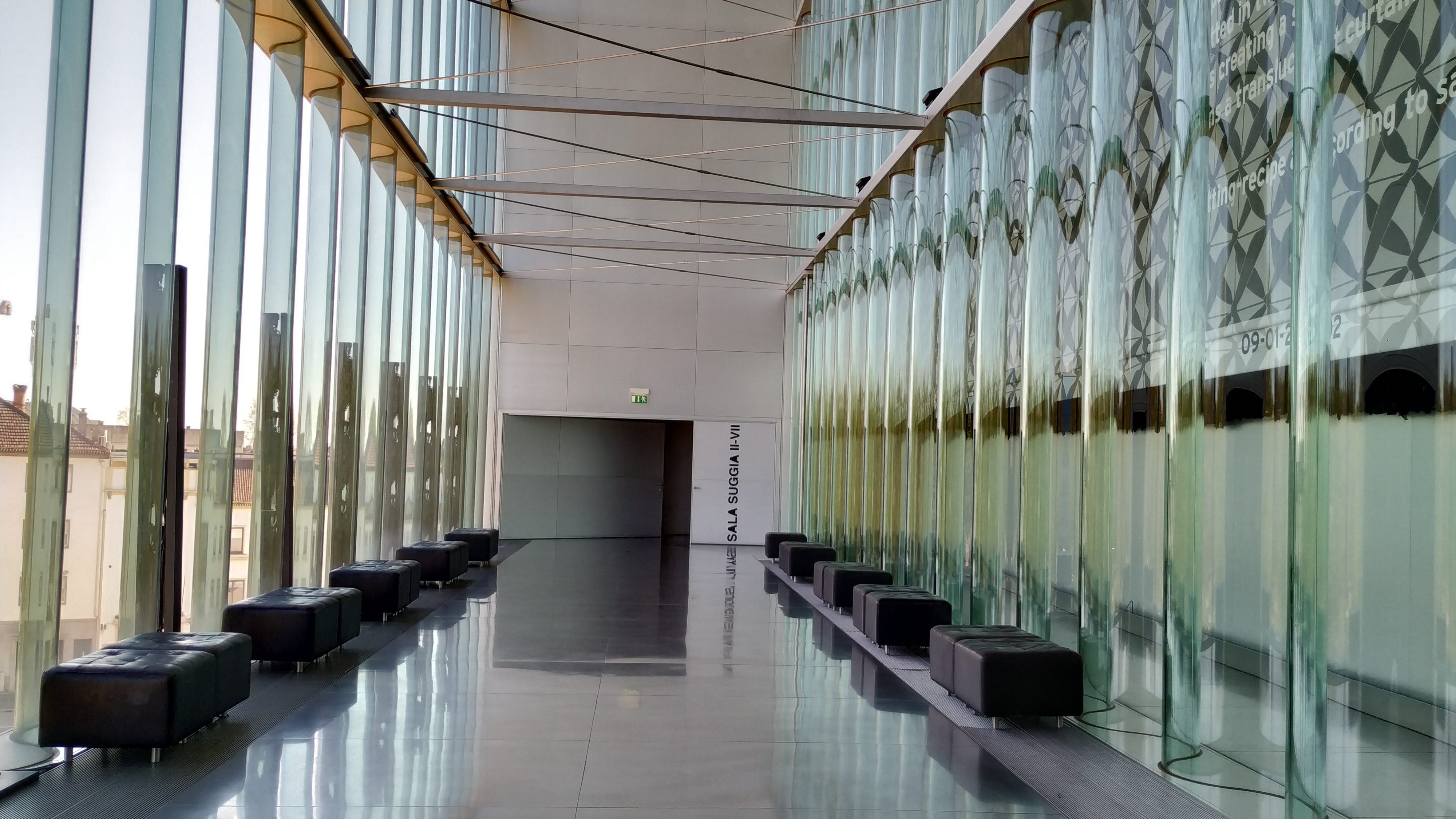
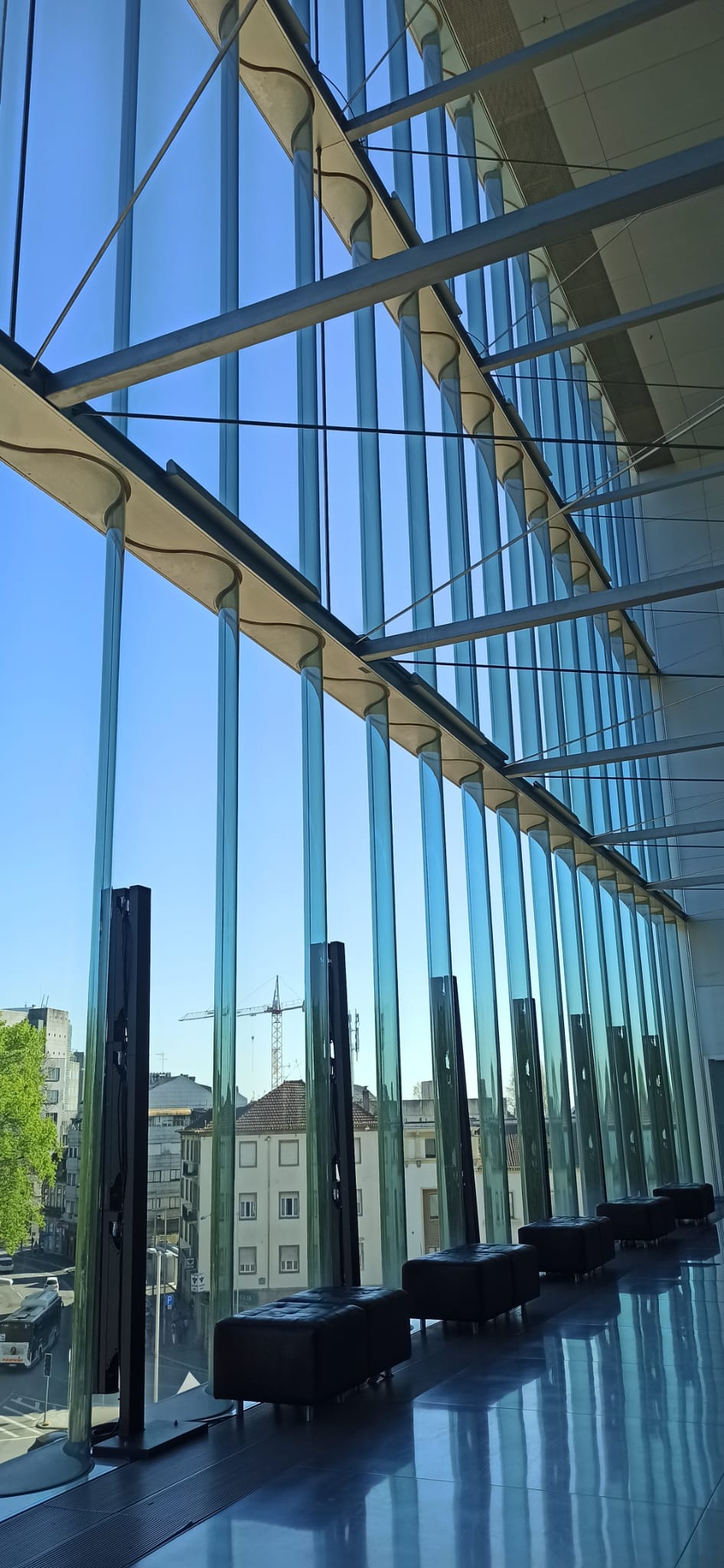
CdM cost 300.9 million euros to build (originally projected for 182.3 million), when you think about this value, it’s easy to question whether the space was well used. If Room 2 is already significantly smaller than the Suggia room, then Cybermusic, Renaissance Room, Purple Room, Orange Room, and VIP Room are almost tiny.
However, the CdM contains two auditoriums in shoebox format, and the void created by these two concert spaces is used as a public space with 8 rehearsal rooms, educational resources, and rooms with recording resources.
When we say that the rooms are small, it is important to reflect on the style of architecture that increasingly invades our day-to-day, and in a certain way clouds our understanding. More and more is invested in the grandeur and lack of character of spaces. A tendency towards standardization and the lack of a clear function has come to assert themselves as the de facto answer of architecture. These faceless, bland, and random buildings that pay no attention to how they blend into a city’s skyline, and of which no one will be curious to know who the team that designed them was, become separate entities that, as if they multiply, they appear to be our reality and habit. To give an example, the contemporary architecture of a shopping centre devalues architectural contexts, they are huge constructions, full of absences, without an inherent order, nor any connection between their parts.
At CdM, white concrete is a deliberate reflection of the cloud tones that Porto-based architect Álvaro Siza uses for his buildings in the city. Giant windows frame views over the city, transforming what is normally an airtight interior into a bright space that explicitly connects the building to the city. CdM subverts all preconceptions of what a concert hall should be and how it should be. It also faces a large civic space, surrounded by a mix of buildings, ranging from the banal to the decrepit and the majestic.
In addition to the personalities and purposes of each room at CdM, and all the connections to the surrounding space, we also have all the notes on the country’s culture. The most obvious example is the VIP Room. Covered by Portuguese tiles. In 2001, both Porto and Rotterdam (Holland) were named European Capitals of Culture. The Dutch architect – although educated in England – used tiles made in Portugal but painted in Delft blue (Delft is a Dutch city famous for its tiles).
Thus, hardly coincidentally, the elegance contained in the CdM gradually reveals itself as it is traversed, replaced by emptiness and restlessness at the intersections of its angles, and in each space, it has a strong personality. Just like the music that is made in it. Likewise, it faces prejudices and connects transparently with the various surrounding spaces, as is the object of its educational service in the most diverse programs.
Perhaps the best analogy we can make with the service that CdM provides to our society is the building that houses it.
Ep. 4 - Leaving the House: Educational Service (2022-03-16)
Why is it relevant?
Education is always relevant, it’s even a human right. But it’s interesting to understand why a concert hall would put the effort into maintaining an educational service.
First and foremost, Casa da Música is a cultural space and an icon, not only of Porto but of Portugal. That being said, let’s kickstart with some ideas for the why:
- There’s real proximity with music;
- It’s easy to find and widely known so, attracts a lot of people, therefore a good place to offer education;
- It contacts some of the best musicians worldwide, therefore it can promote an awesome network of connections;
- It’s external to the formality and frameworks of schools where teachers are forced to follow a programme, which makes often teaching less natural to the teacher.
“a revolução cultural não é eu poder ir tocar a todos os sítios, é ir aos sítios e ouvir a música que é feita lá”. – Zeca Afonso
This sentence transmits the idea that “the music depends on the spaces” and that “Music is something that is done, and not something that is achieved”. Which are some concepts that we’ve mentioned in the Bibliography.
How is the Educational Service organised?
Performances
- First Concerts: For preschoolers;
- Our Concerts: For schools;
- Pre-concert Lectures;
- Commented Concerts.
Workshops
- First Workshops: For preschoolers;
- Our Workshops: For schools;
- Special Weeks: Exploring different, unusual instruments
- Major Friday;
- Workshop of the Day.
Training Sessions
- Training at Casa da Música: Technical courses;
- Free Courses: Continual education such as “How to listen to contemporary music”
Out of this World
Miscellaneous initiatives – Projects, Hotspots, and Guided Tours – that don’t fit the other major categories, current examples are:
- https://orelhudo.casadamusica.com
- Open Rehearsals
- Children’s choir
But none of these initiatives is in “the more known form of education”?
Rui Canário, was a professor at the University of Lisbon who studied education and training politics, in the number 67 of NOESIS magazine, opinion article “Aprender sem ser ensinado” (https://www.dge.mec.pt/sites/default/files/CDIE/RNoesis/noesis_miolo67.pdf, page 21 of the pdf), wrote:
"Se aprender é algo de intrínseco ao ser humano, também é verdade que o ensino não é uma condição necessária nem suficiente para que se verifique uma aprendizagem. Aprendem-se coisas que não são ensinadas e ensinam-se coisas que ninguém aprende. Felizmente, a maior parte das situações de aprendizagem que vivemos não são formalizadas, no sentido de obedecerem aos requisitos do modelo escolar, nem sequer deliberadas (não há consciência de que o principal objectivo seja aprender algo). A aprendizagem surge, então, como um co-produto da acção."(the plain text can be found at http://direito.webview.pt/troca.php?no=37)
This idea is that Education is a process of facilitating the resources and means so that one can learn without being taught. “Let me show you what I can do, now you want to learn it, right? :)”
When is education justified?
We educate about what is complex and non-natural, like eating with cutlery.
Rewinding to “a revolução cultural não é eu poder ir tocar a todos os sítios, é ir aos sítios e ouvir a música que é feita lá”, we immediately understand that to get comfortable is an easy trap. We need to explore the unknown. An idea already expressed by Fernando Pessoa with:
Triste de quem vive em casa,
Contente com o seu lar,
Sem que um sonho, no erguer de asa,
Faça até mais rubra a brasa
Da lareira a abandonar!(the full poem can be found at http://arquivopessoa.net/textos/96)
Think of Europeans trying sushi for the first time. If one is at home and just ordered it, he might not even try to use the chopsticks and simply resort to its loyal fork. But if in a sushi restaurant, and with someone showing him how to use them, he will try and get used to it.
The human being is lazy by default, which calls for the need of calling for action in exploring the unknown. In the end, that effort and bravery lead to a more fulfilling and rewarding experience. In the particular case of music, among other things, it expands our capability of expression (think Jazz).
Important Takeaways from Jorge Prendas
Jorge Prendas collaborates with this service from Casa da Música since 2007 and started coordinating it in September of 2010. He also helped to create the Cappella quintet Vozes da Radio in 1991.
- Aprendizagem por transmissão VS O que levas daqui: Never ask “what have you learned”. Socrates said, “Education is the kindling of a flame, not the filling of a vessel.”
- Every concert of this service aims to answer an underlying motto question.
- A key principle of every community project is never to be in a possible light of being looked at condescendingly. This meets the idea of the quote by Zeca Afonso referred to earlier. The adopted approach to achieve this goal has been co-creation.
- A very succinct cultural aspect that expresses what should be the aim of any community project is: “Give, Get, Share: Here and Now”. This revolves around ideas of the project (Give, Get, Share), context (Here) and Time (Now).
- The stage is, by its fundamental usage, a plural space that promotes inclusion. This is a characteristic that, through the educative service, Casa da Musica strives to transfer to society.
- The Educational Service does its best to involve the accompanying team of the audience in its educational actions. That way there can be a follow-up and a more holistic understanding of them before, during, and after the project.
